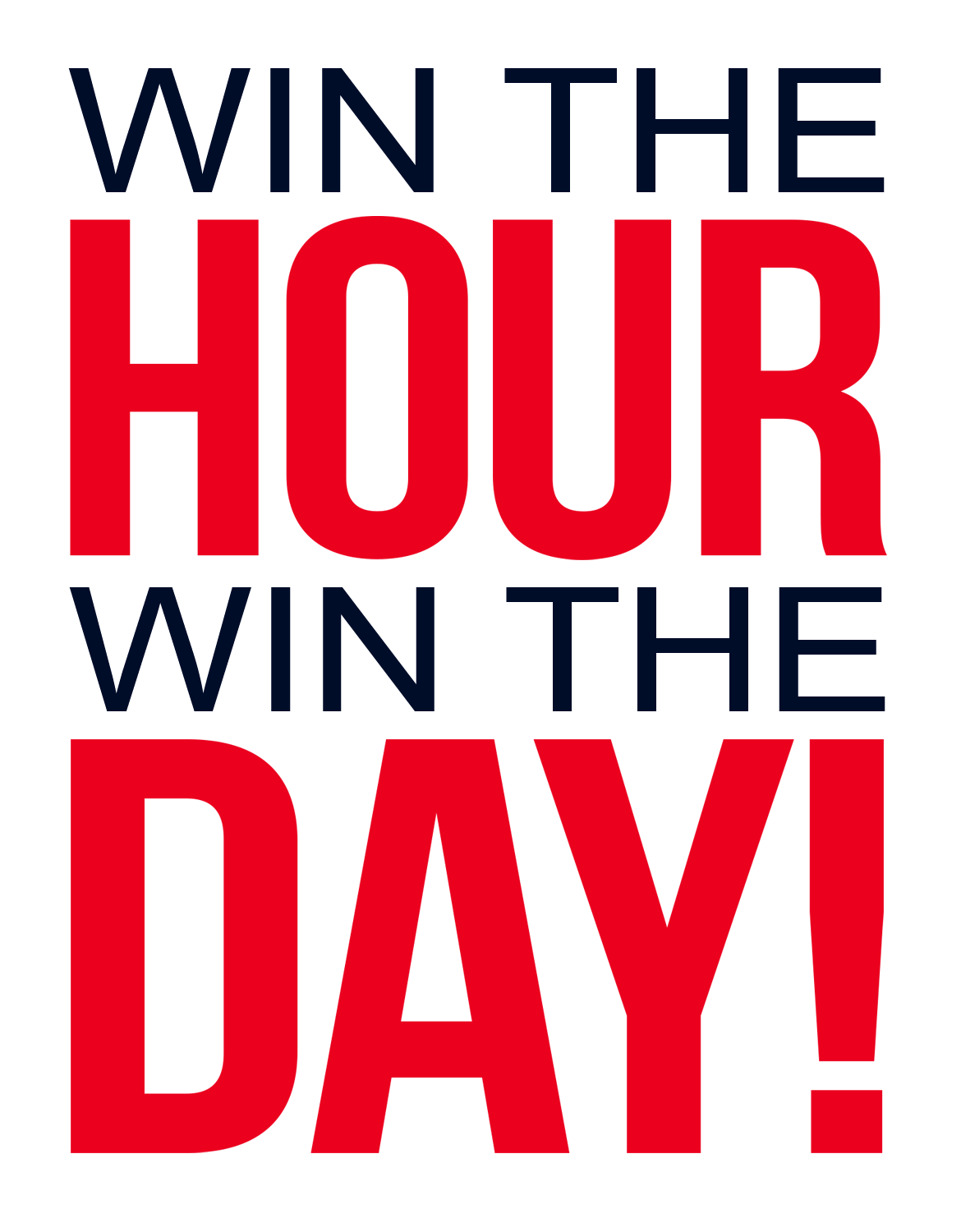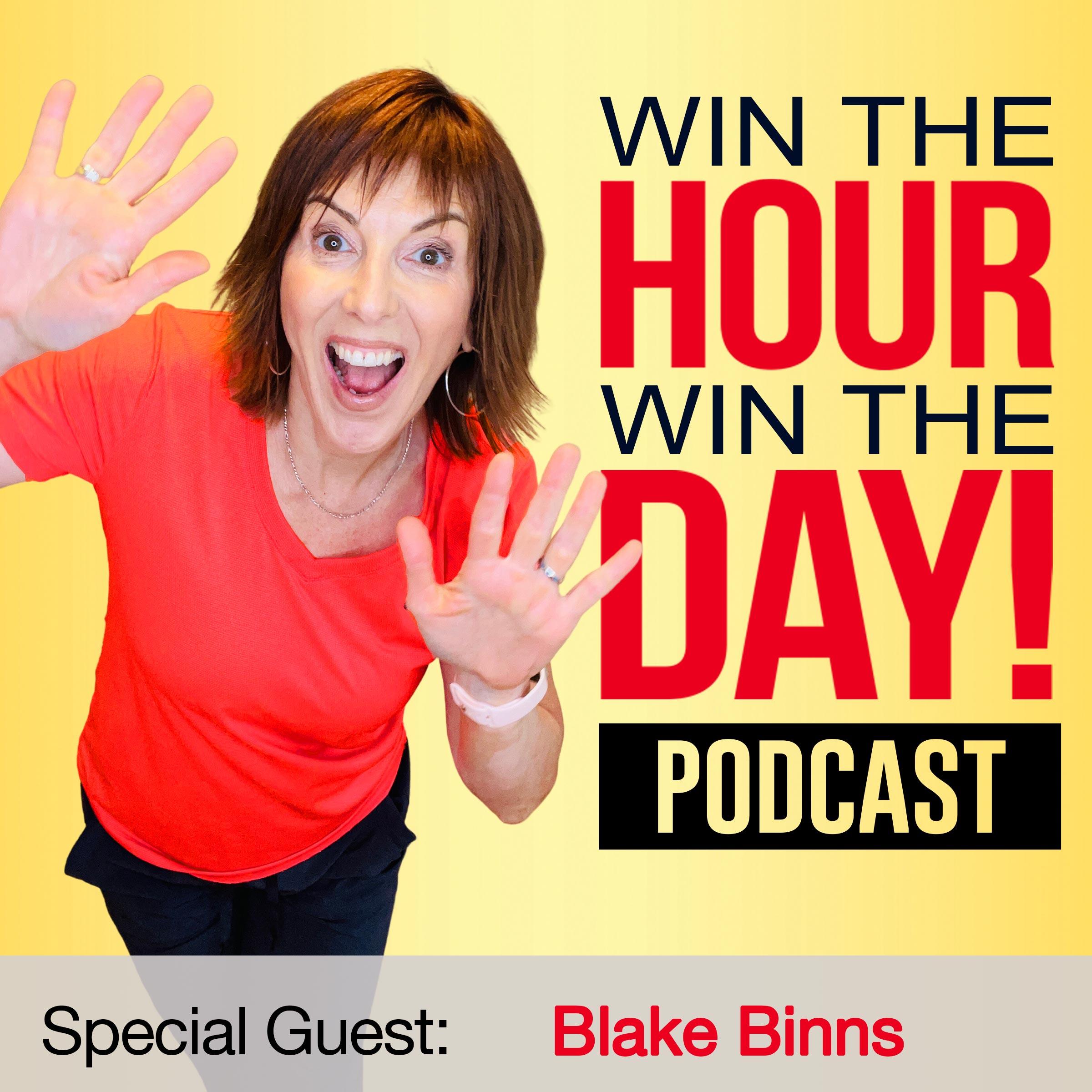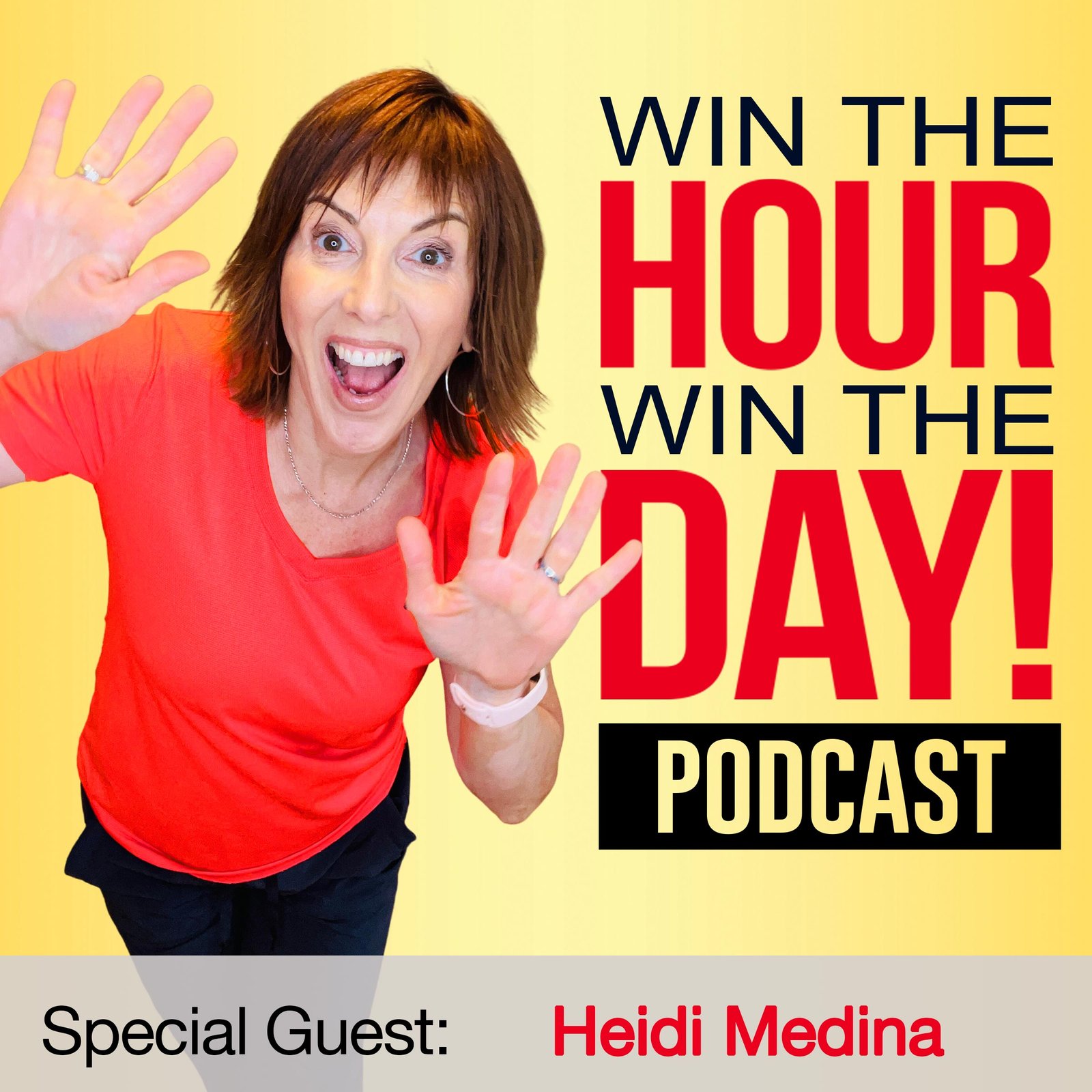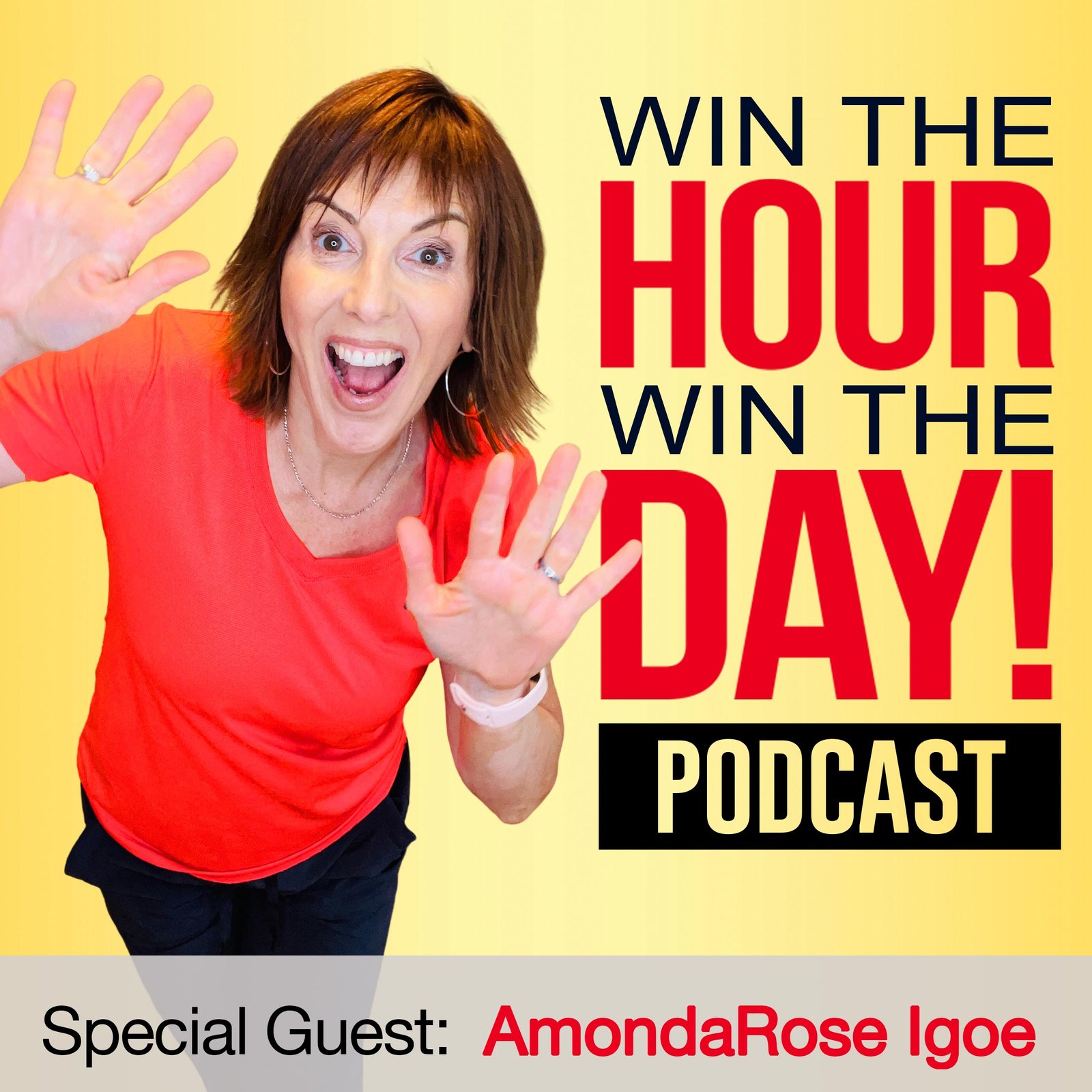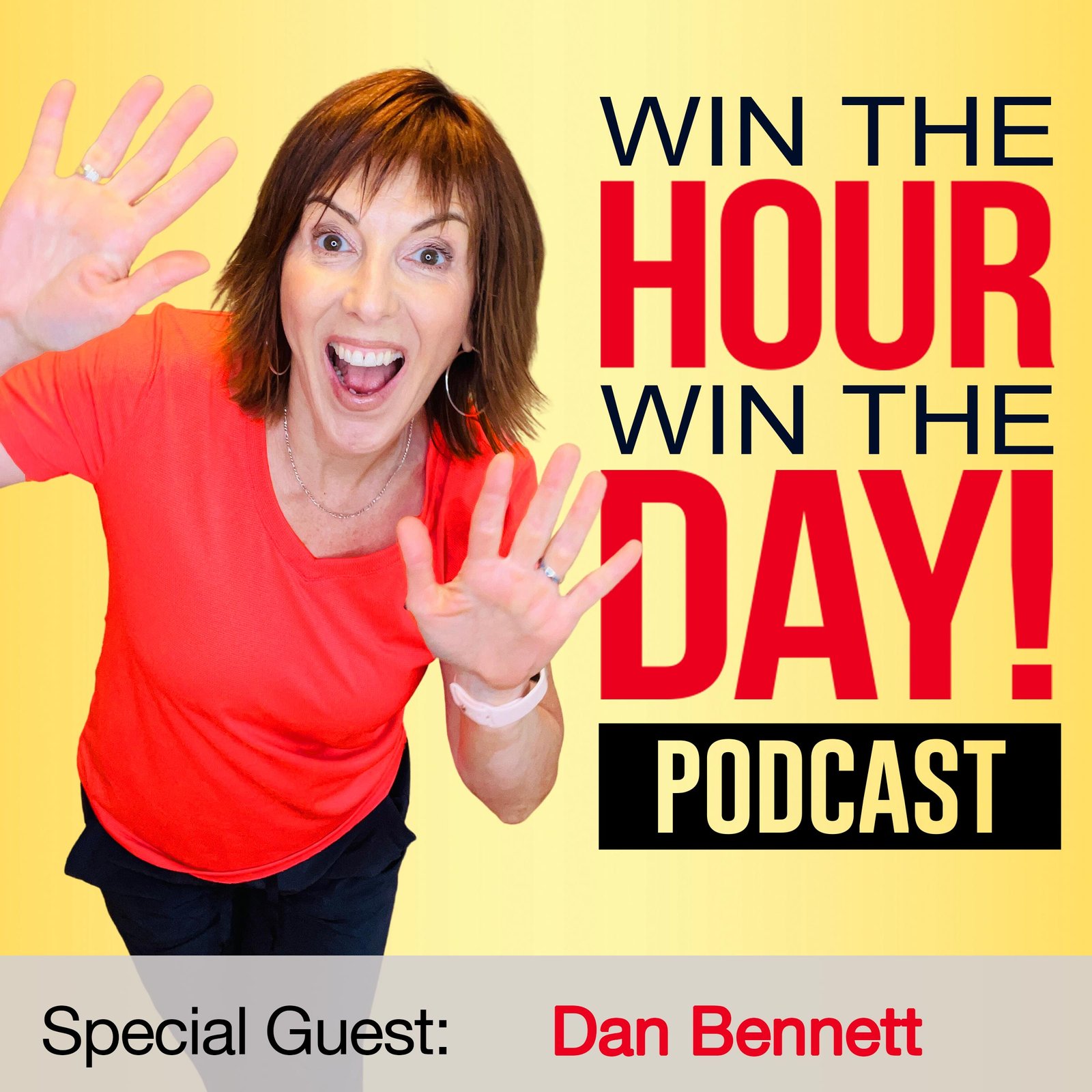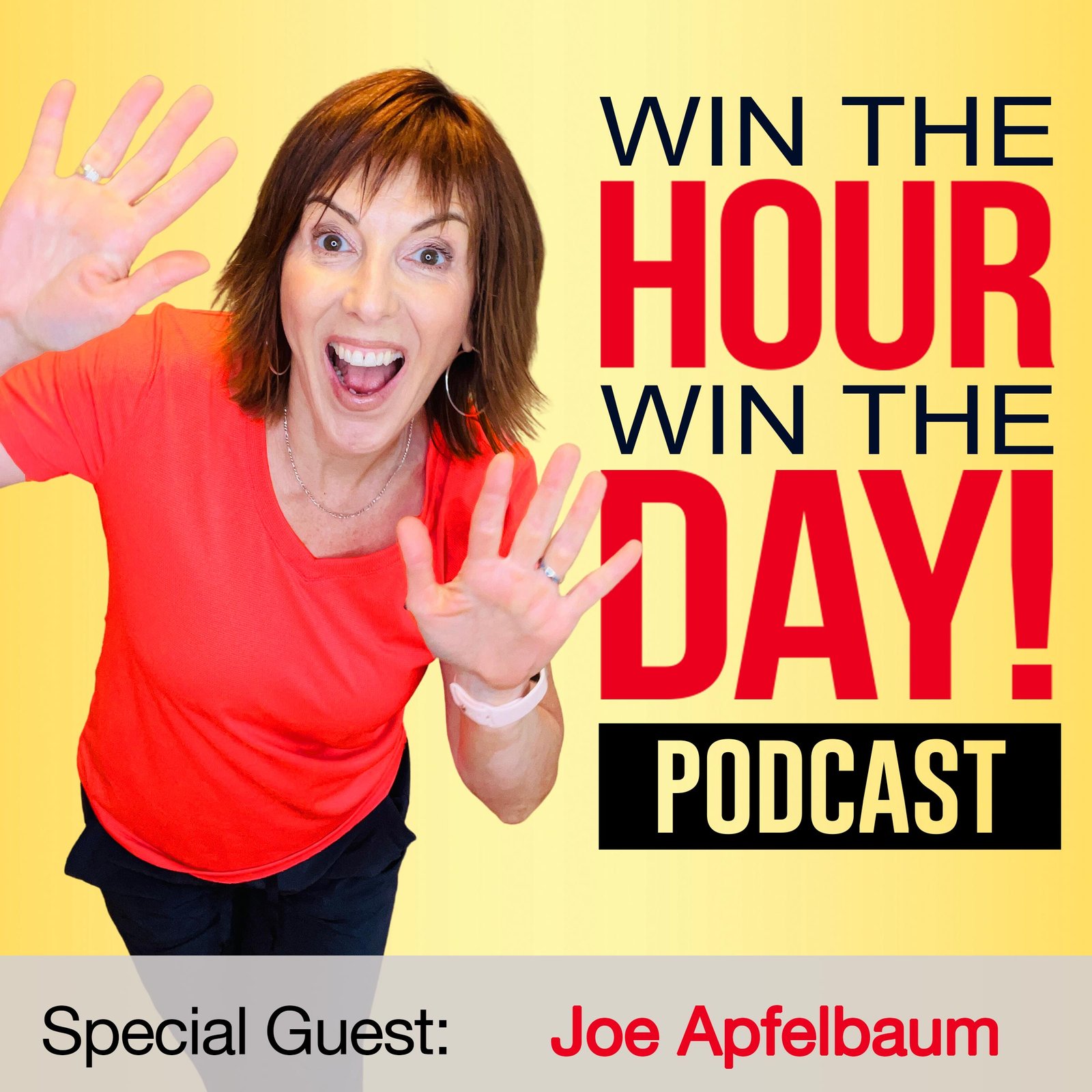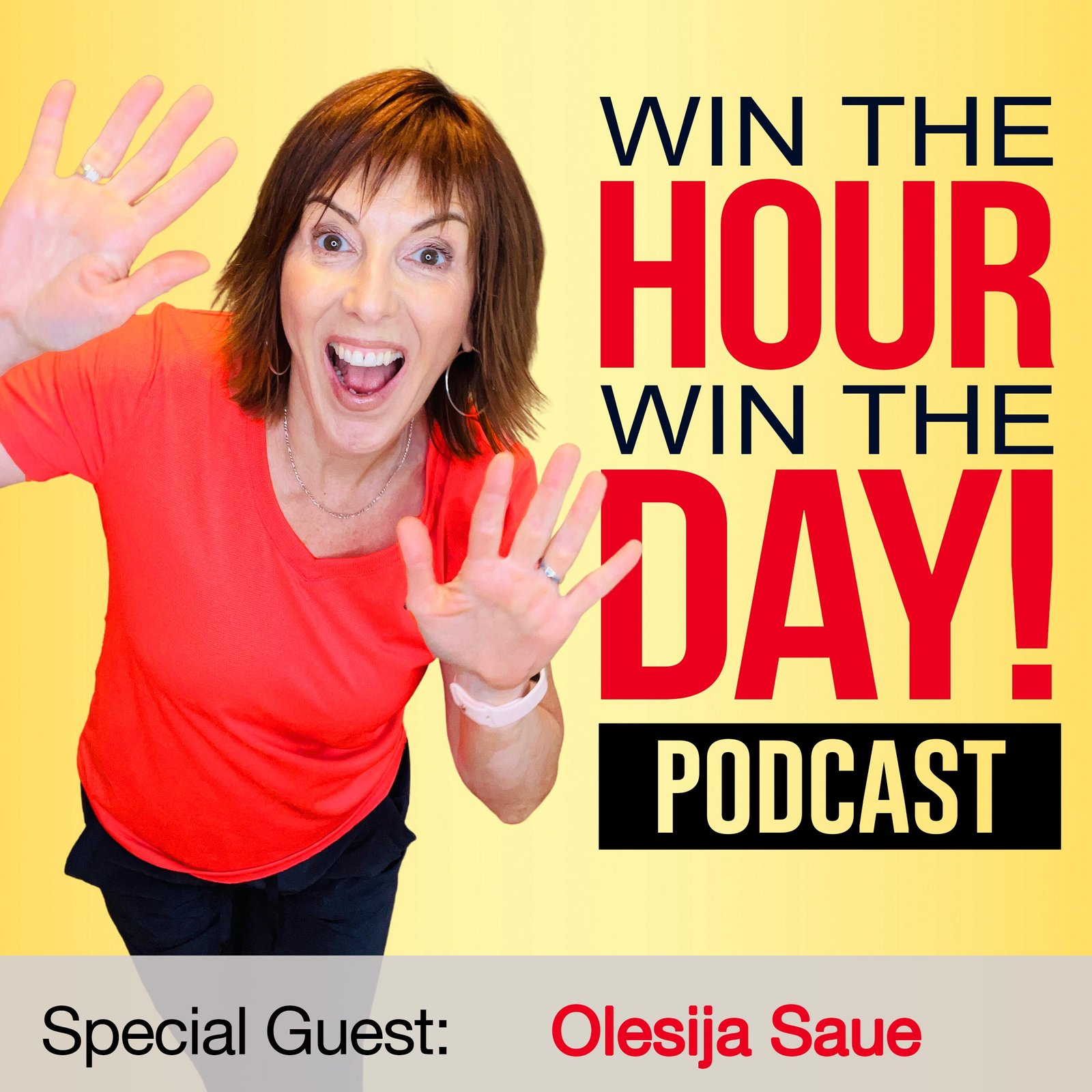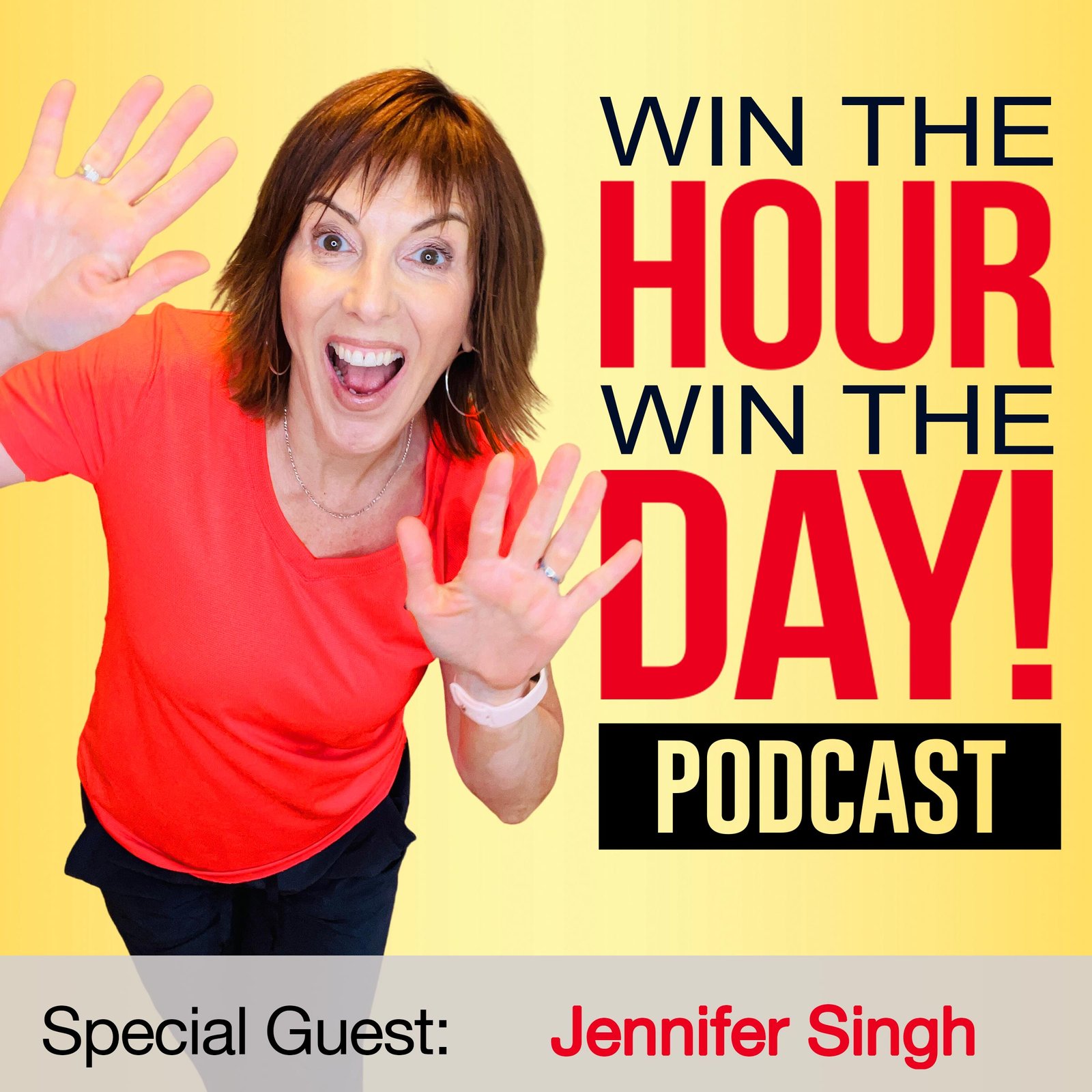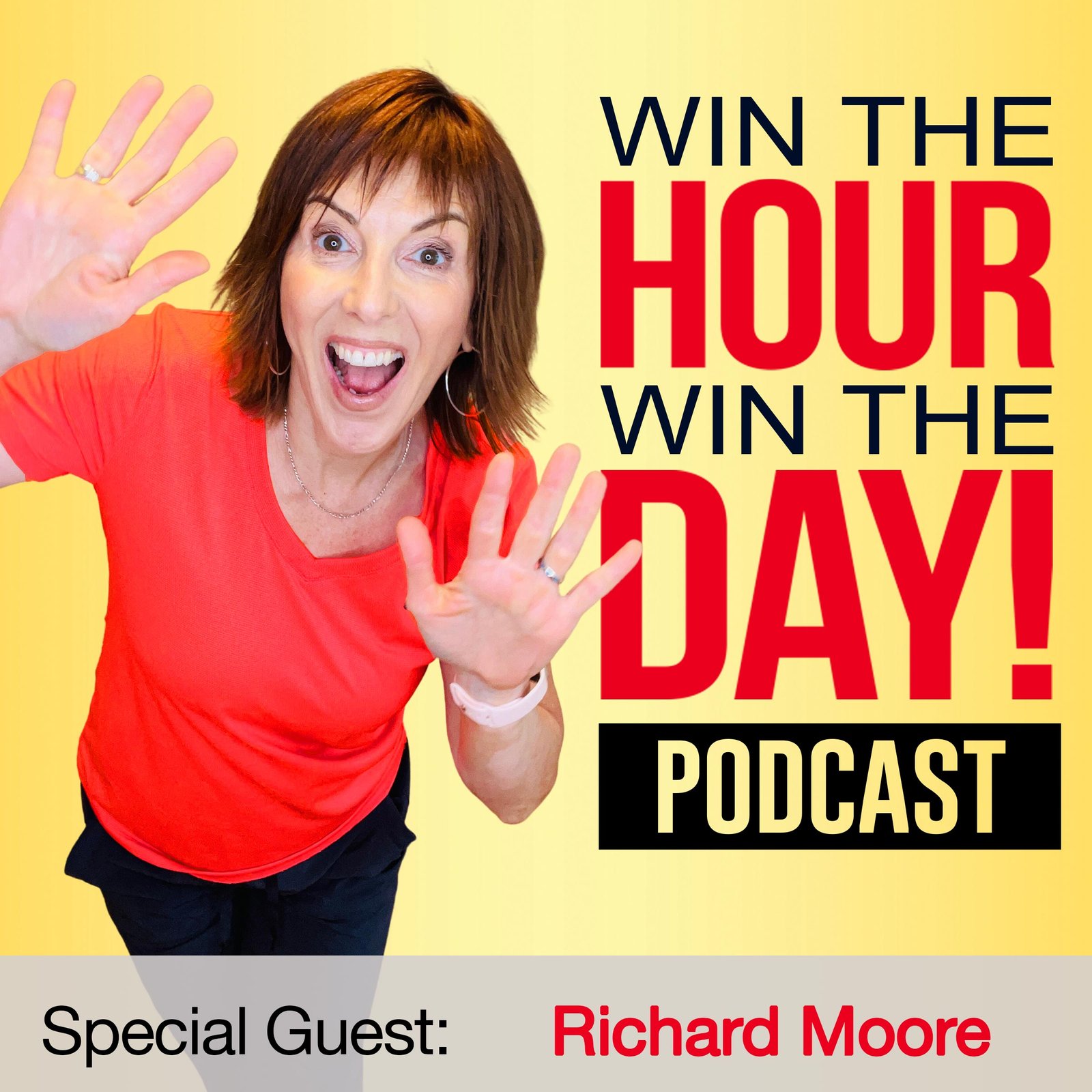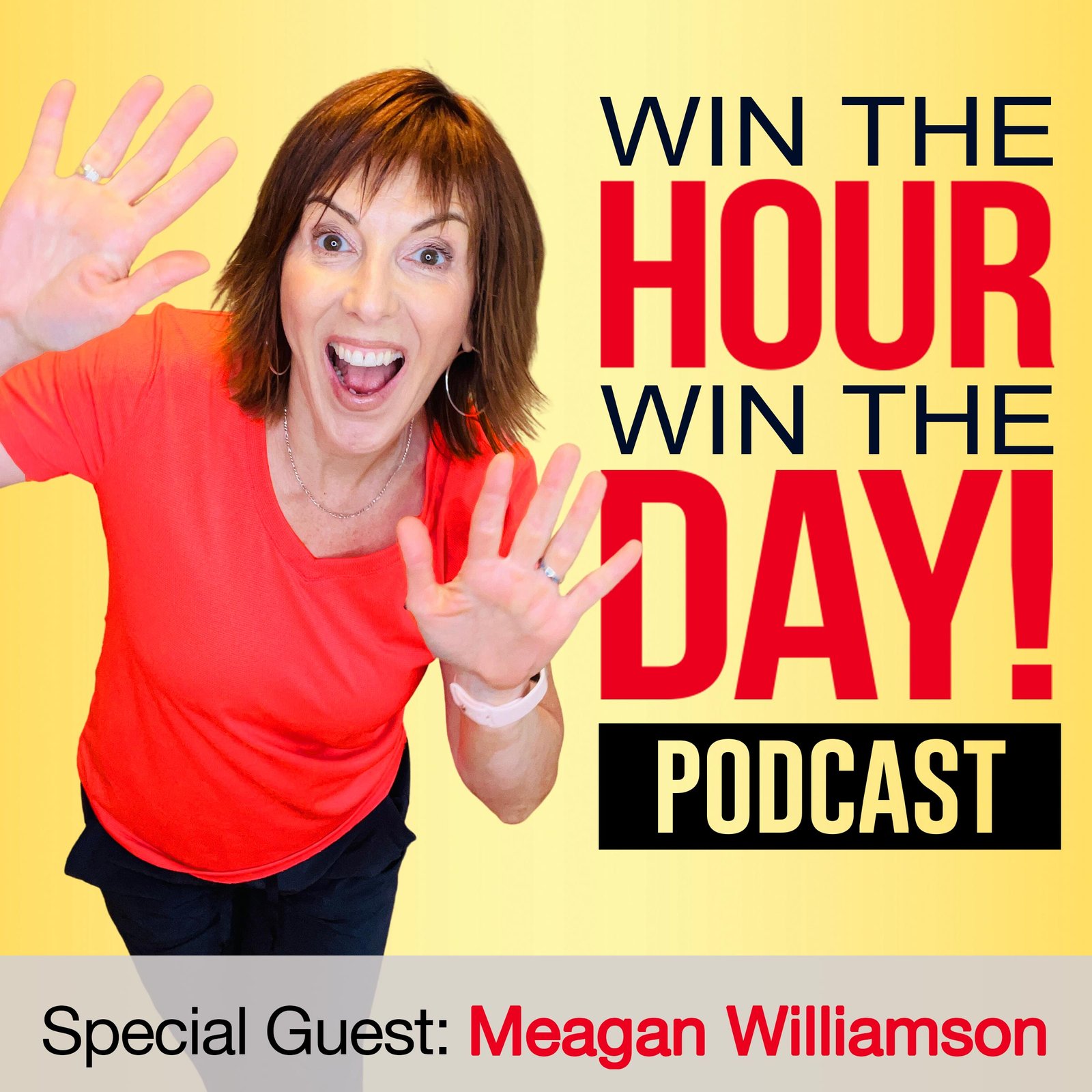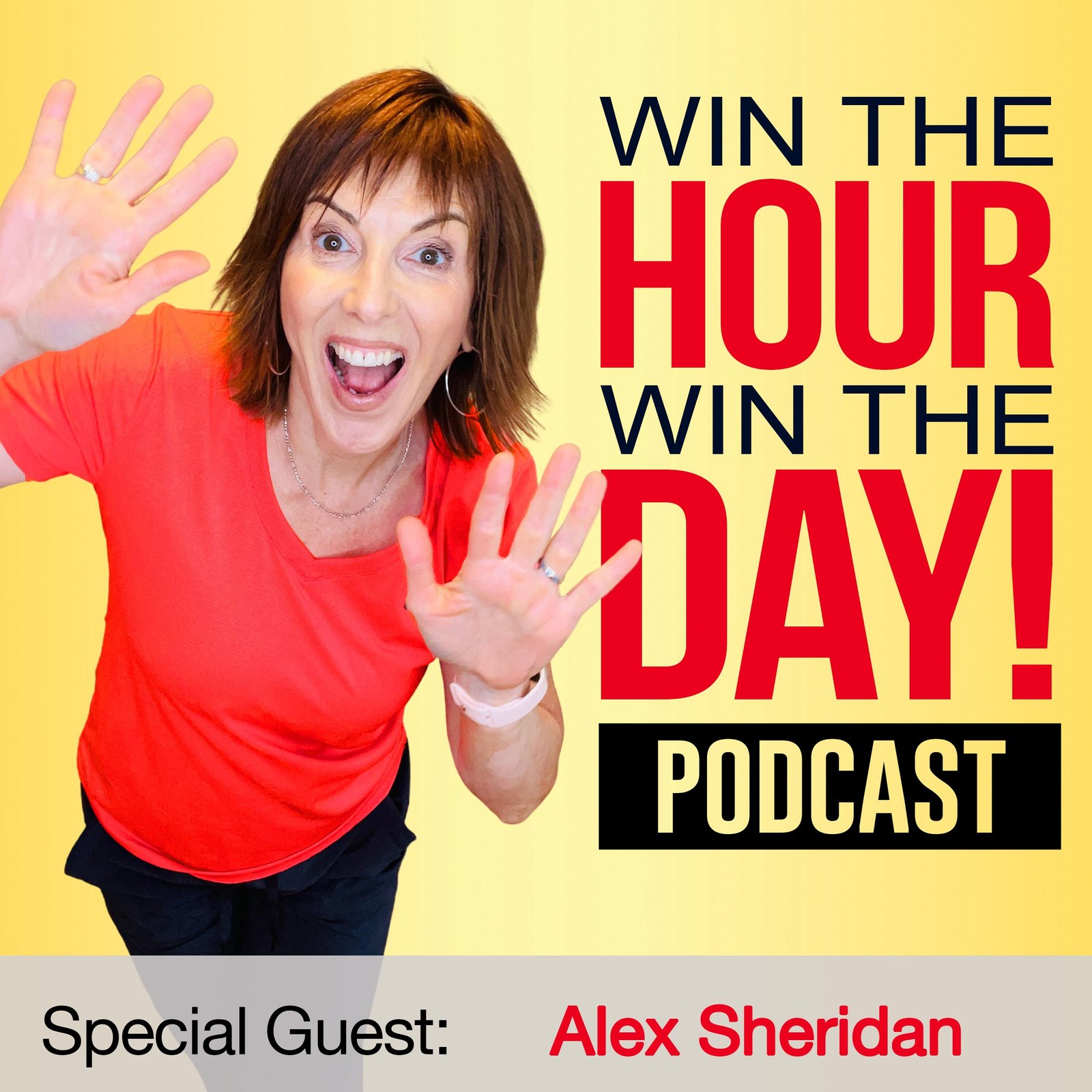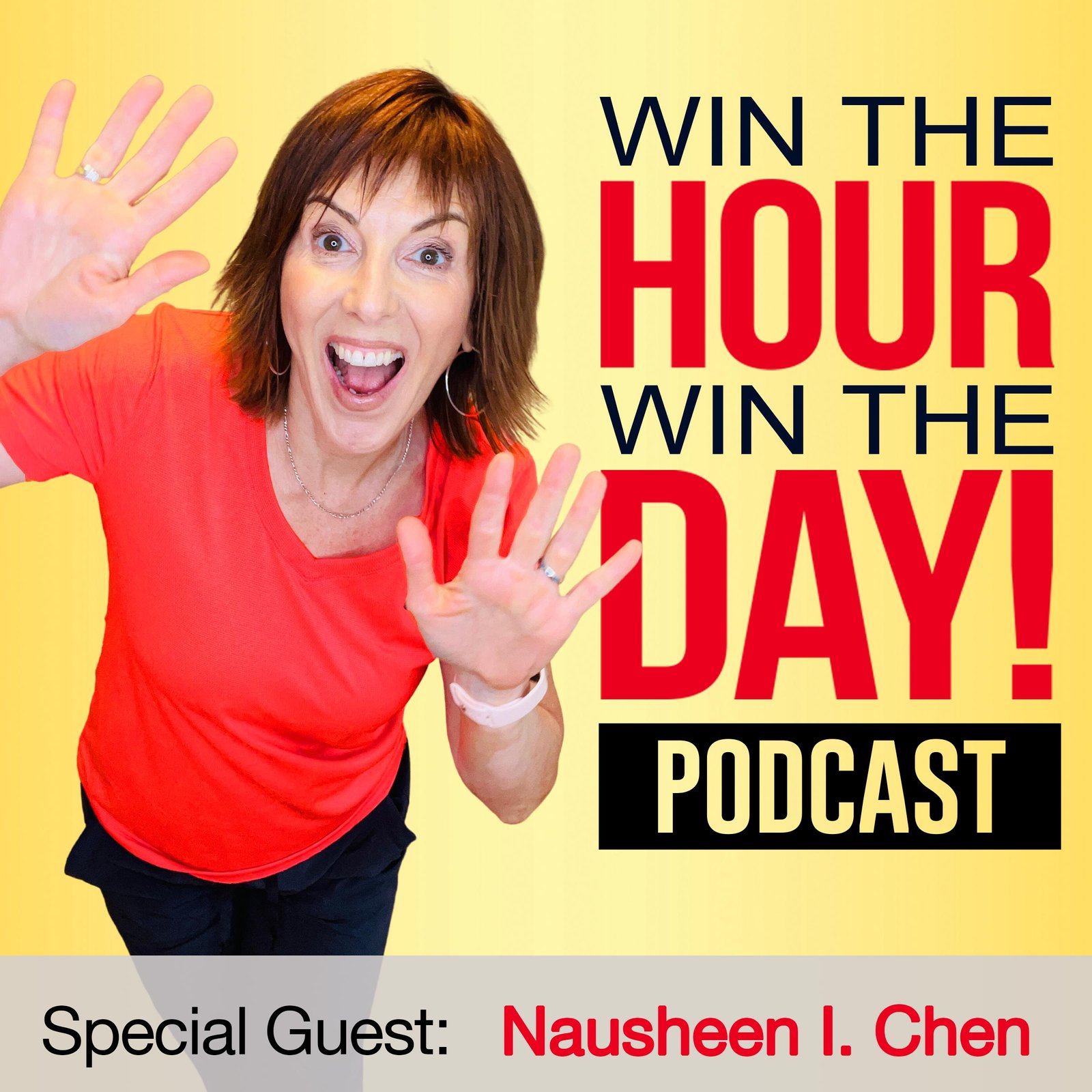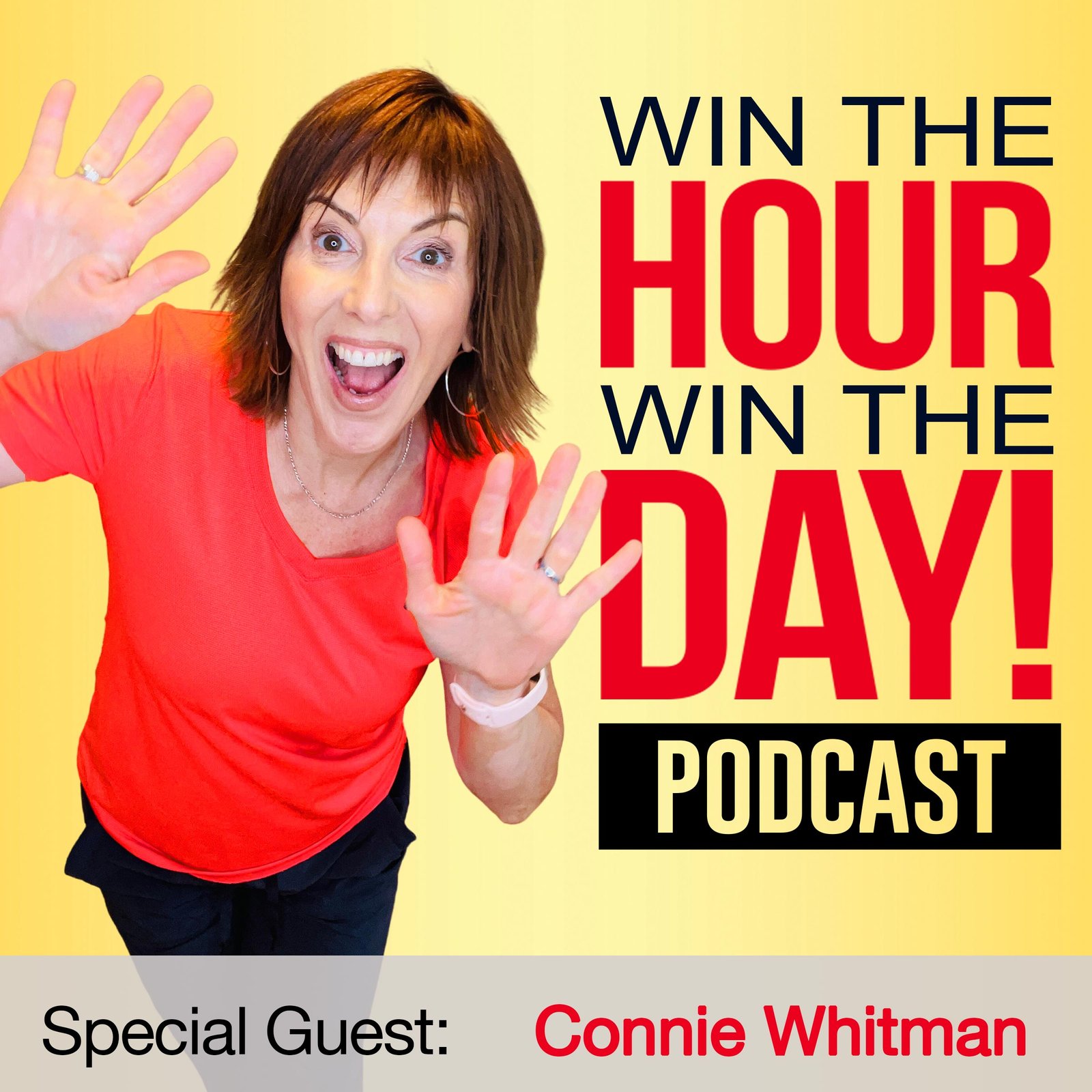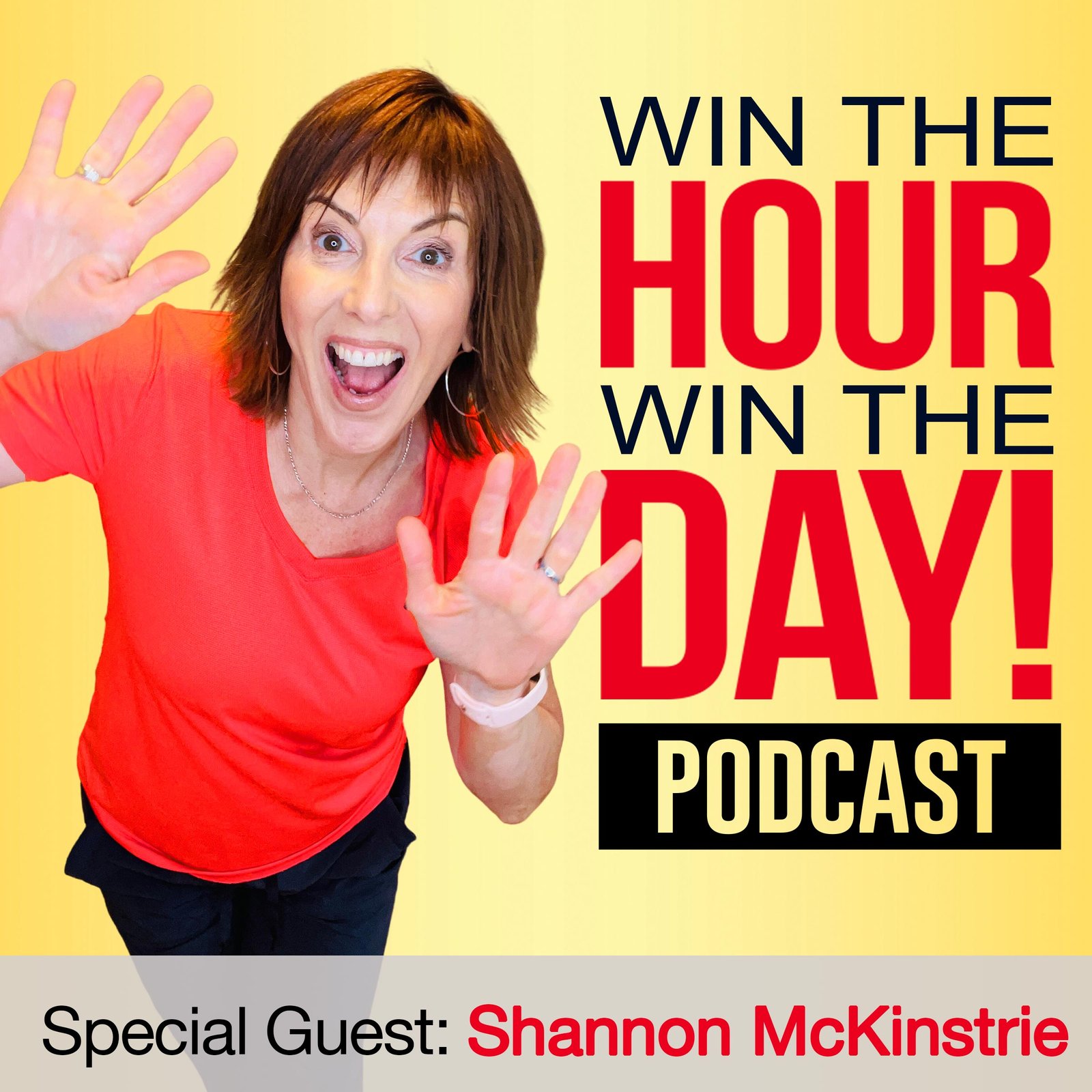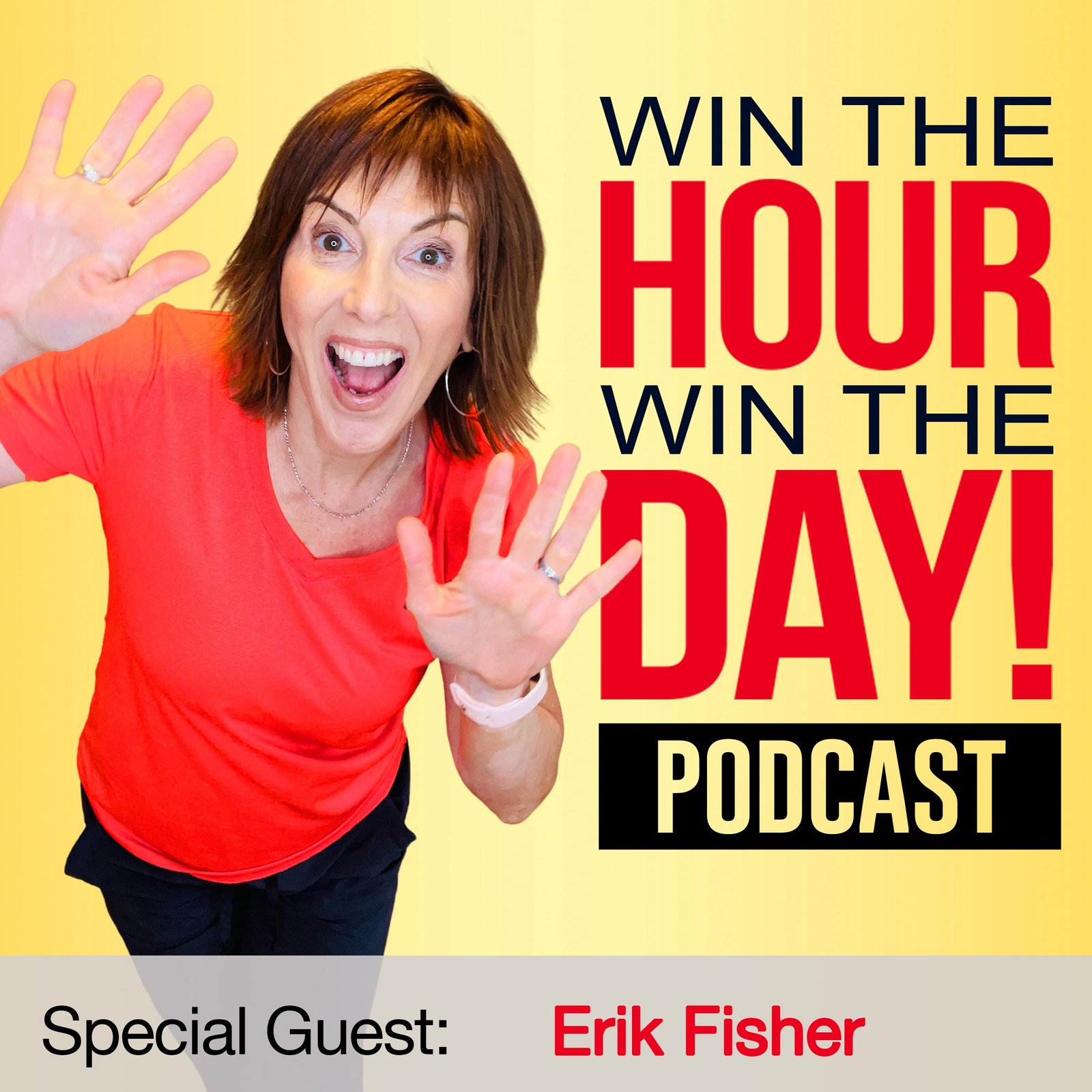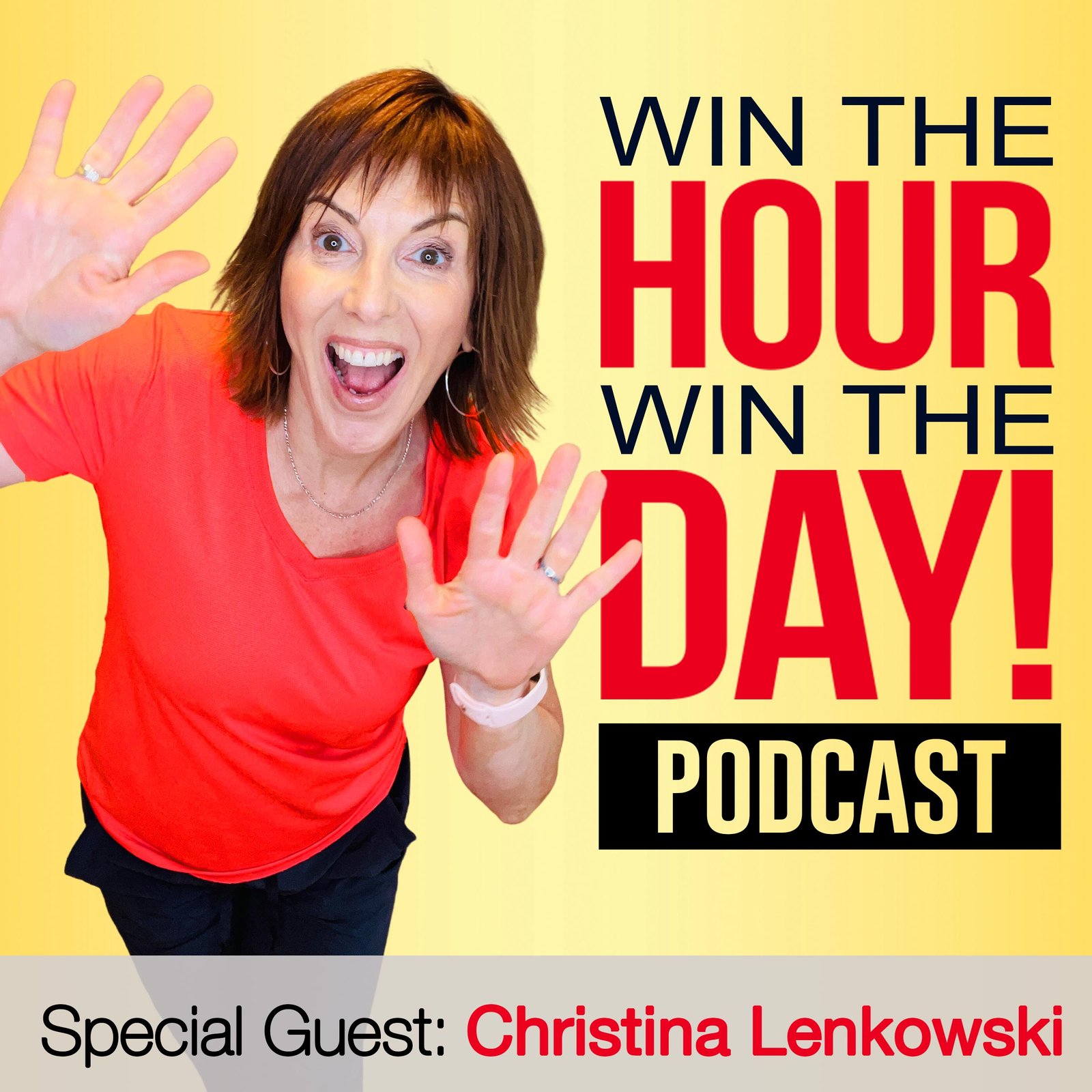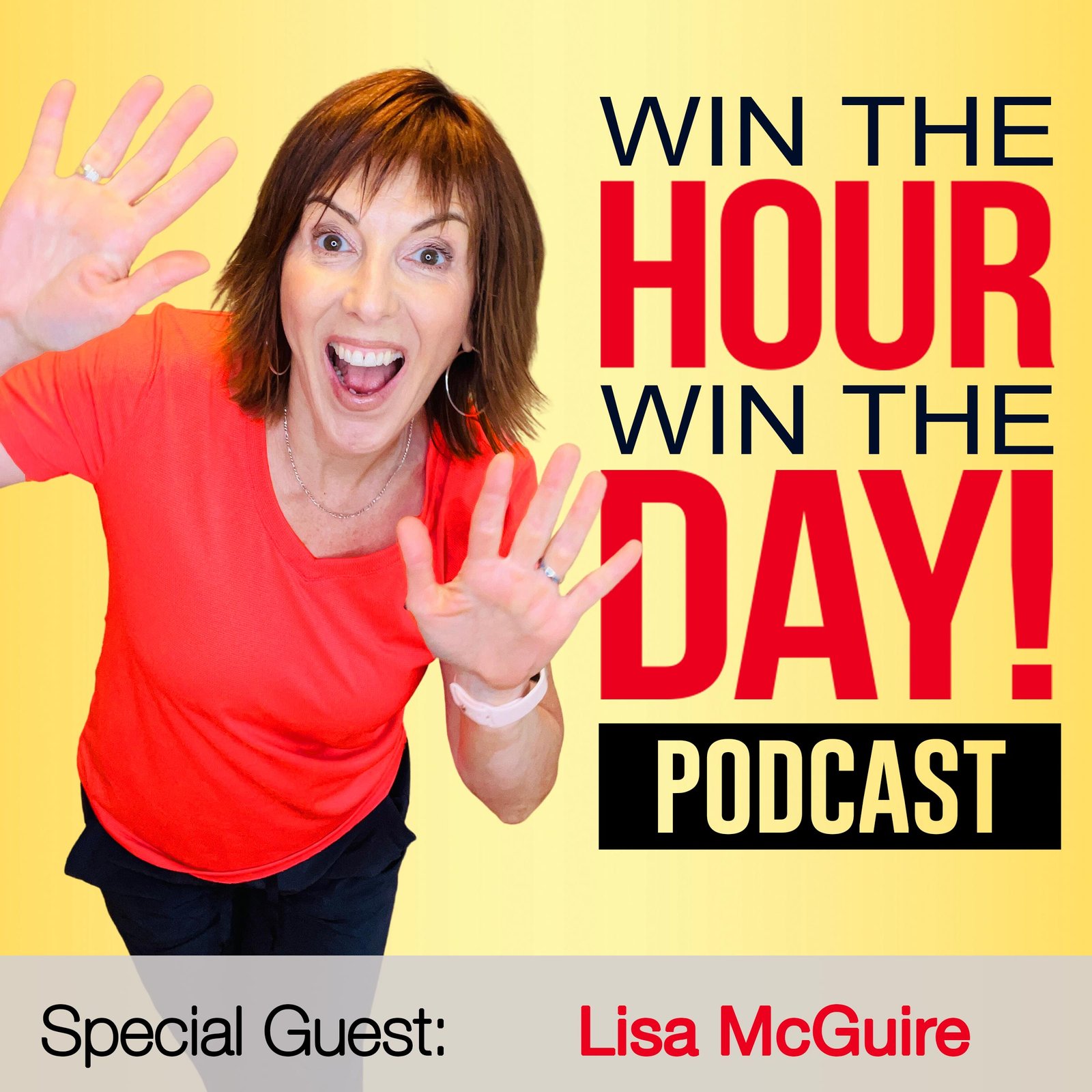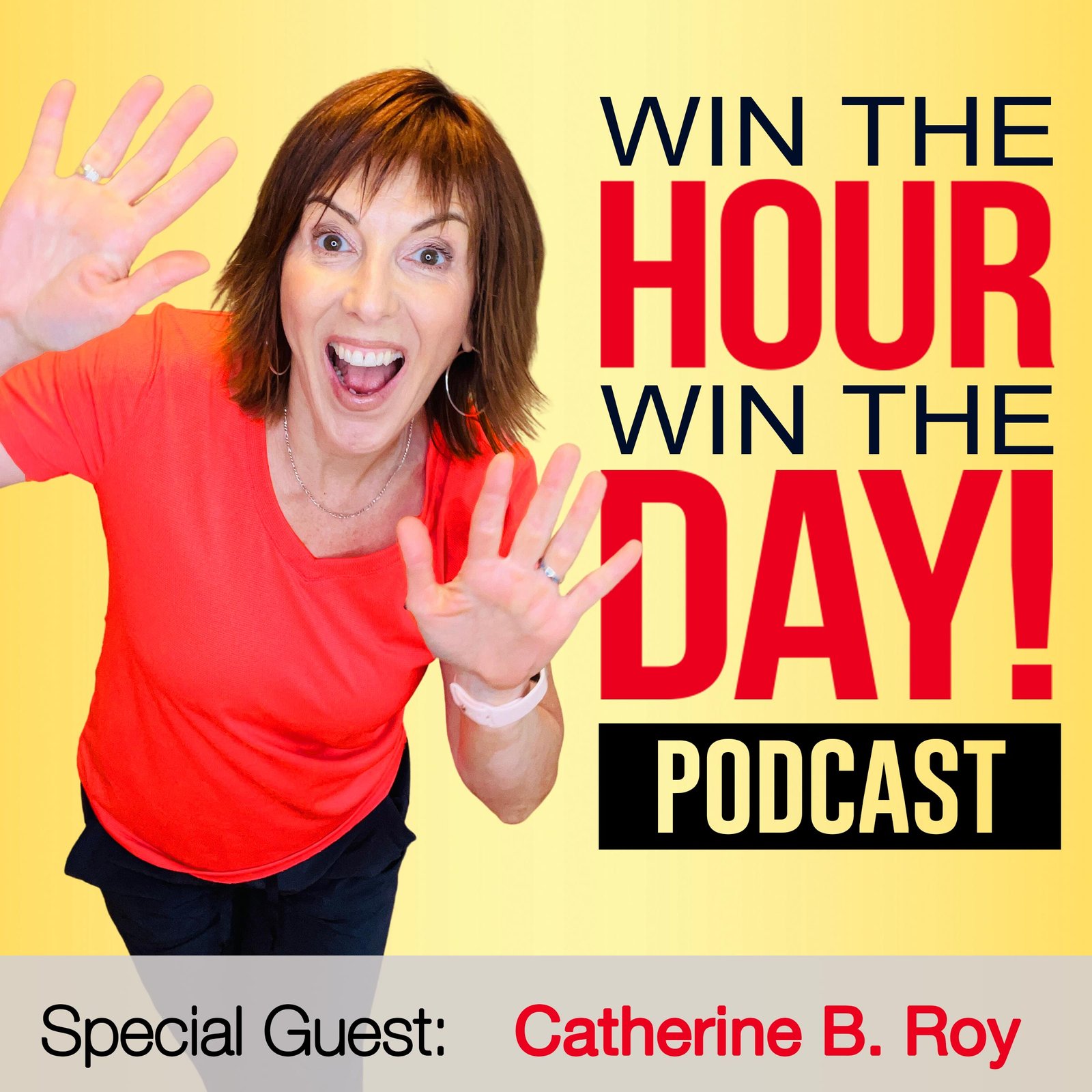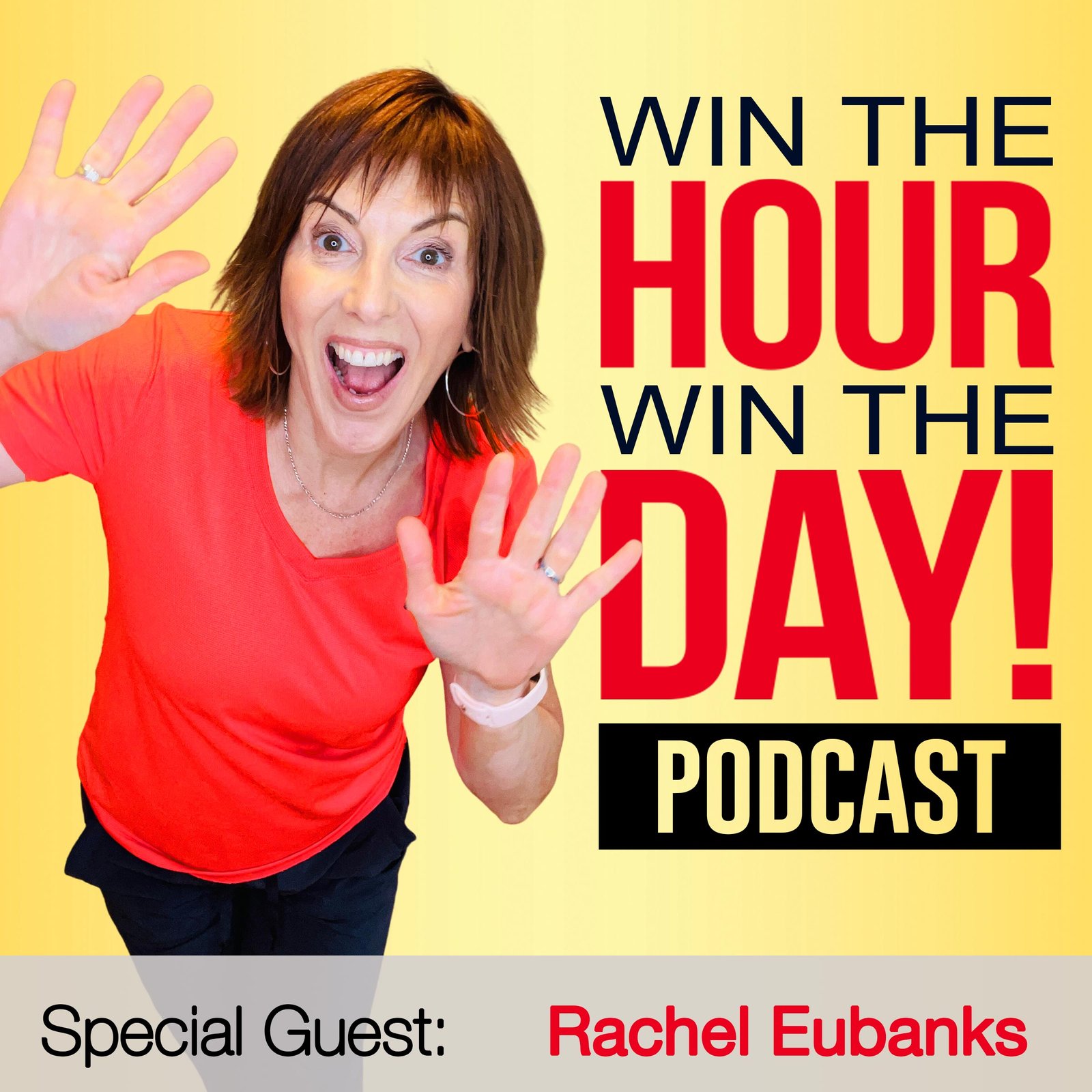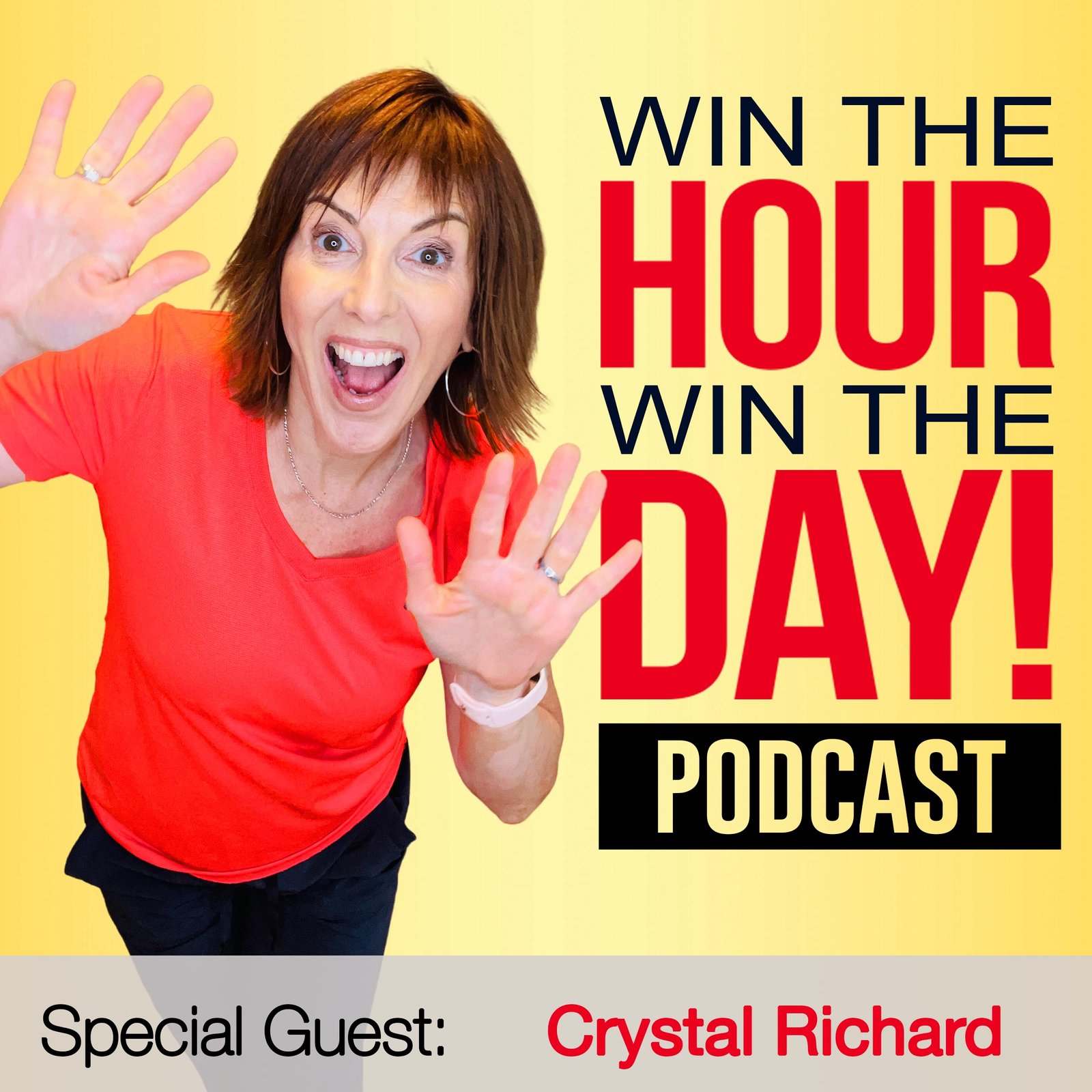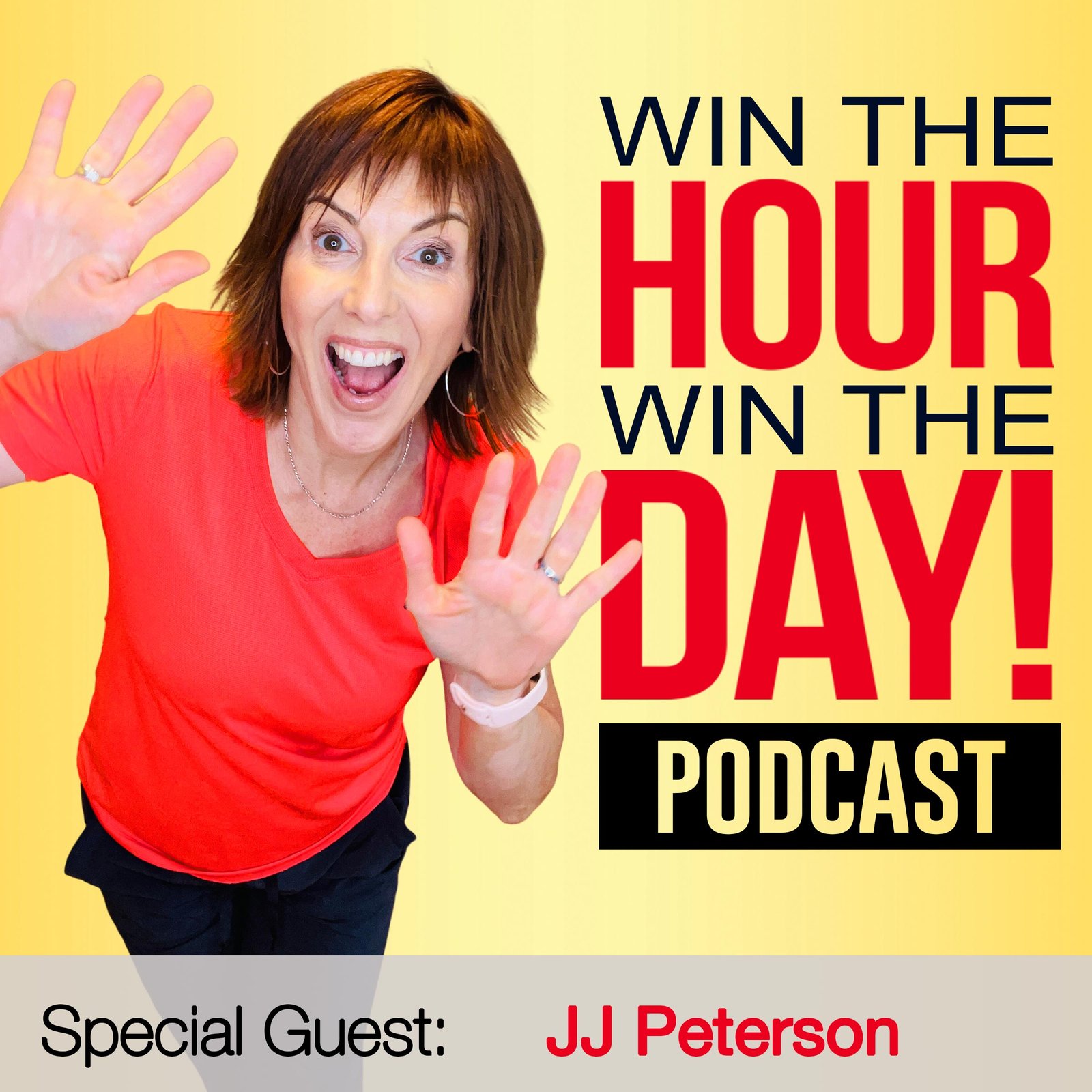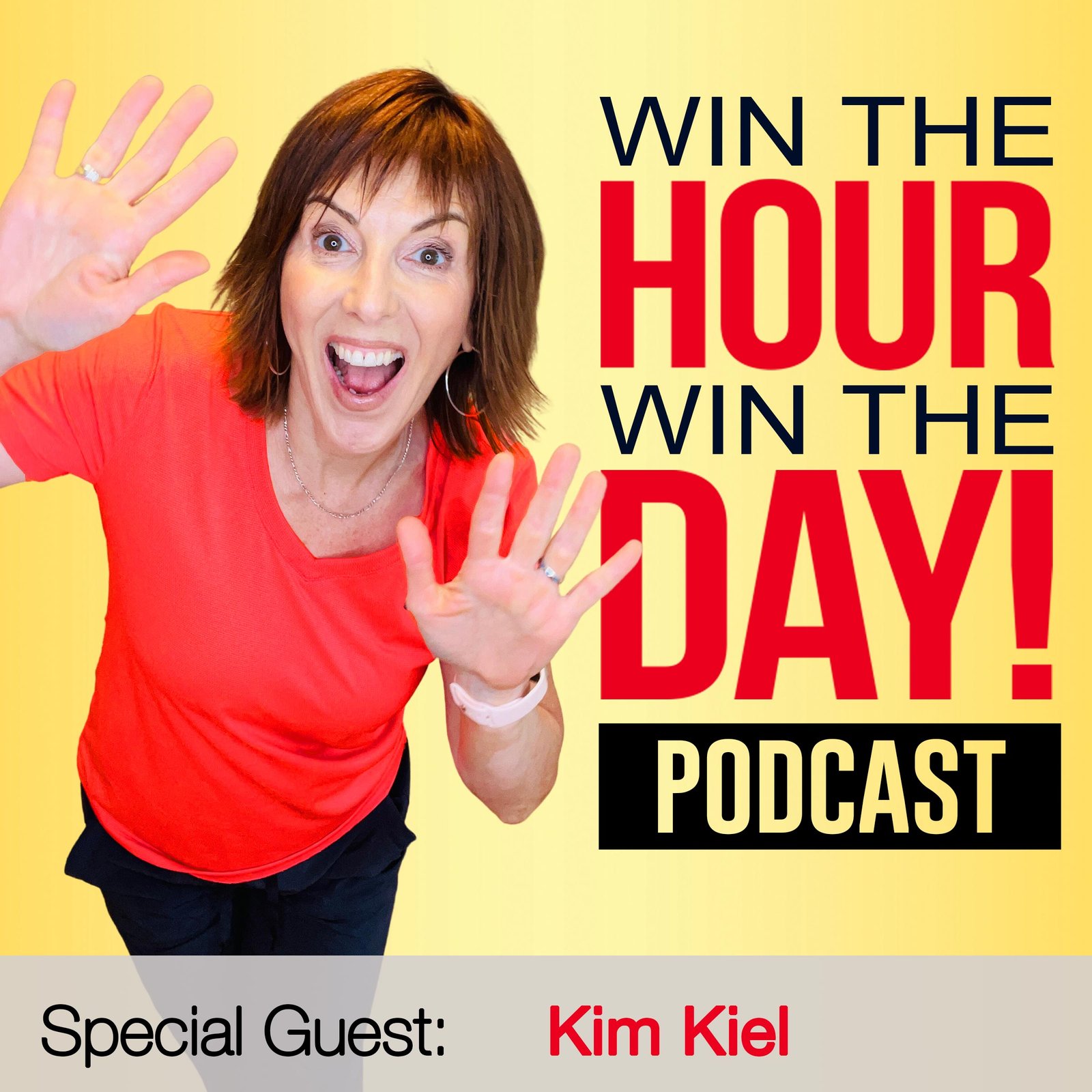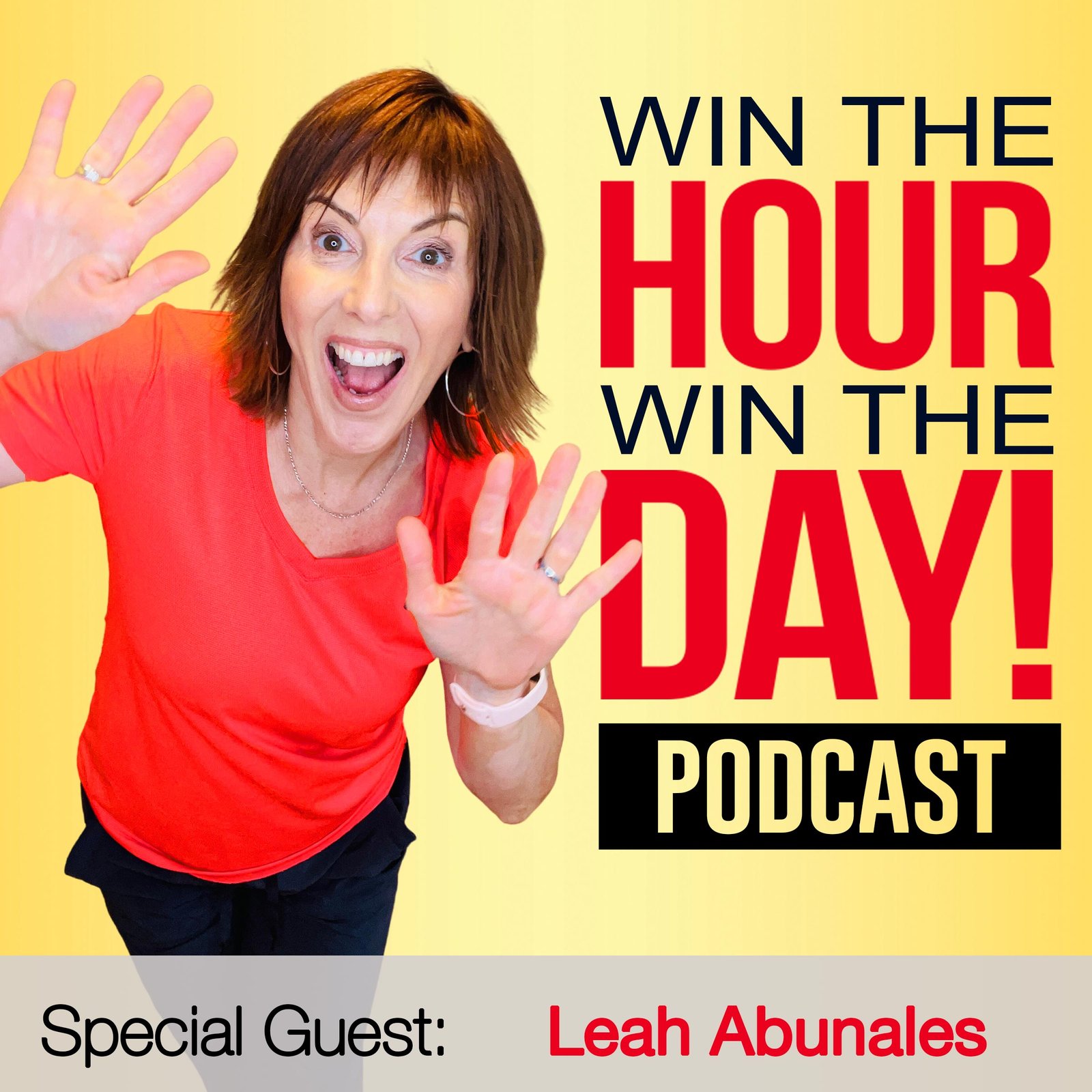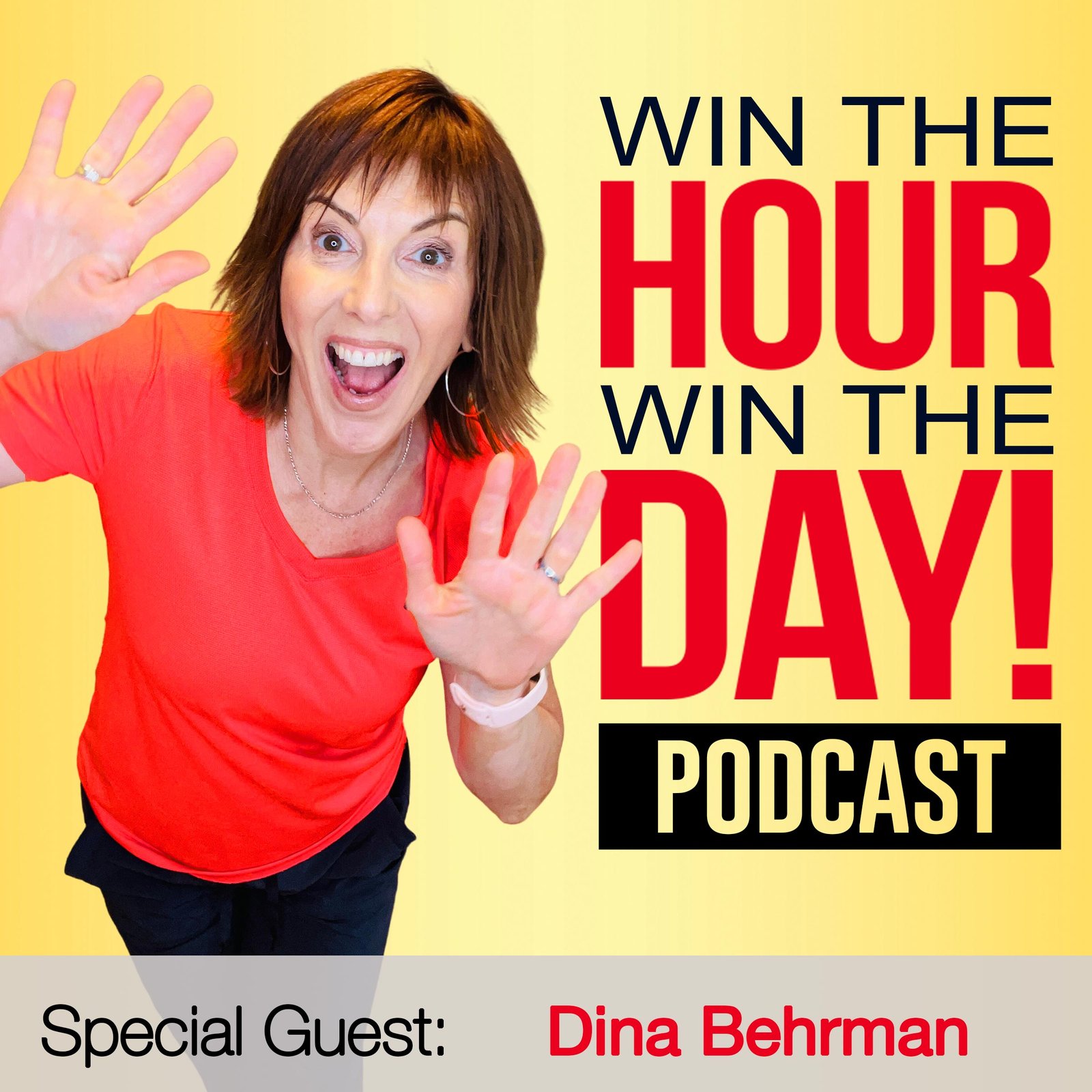Episode Summary This week’s episode of Win The Hour, Win The Day Podcast is...
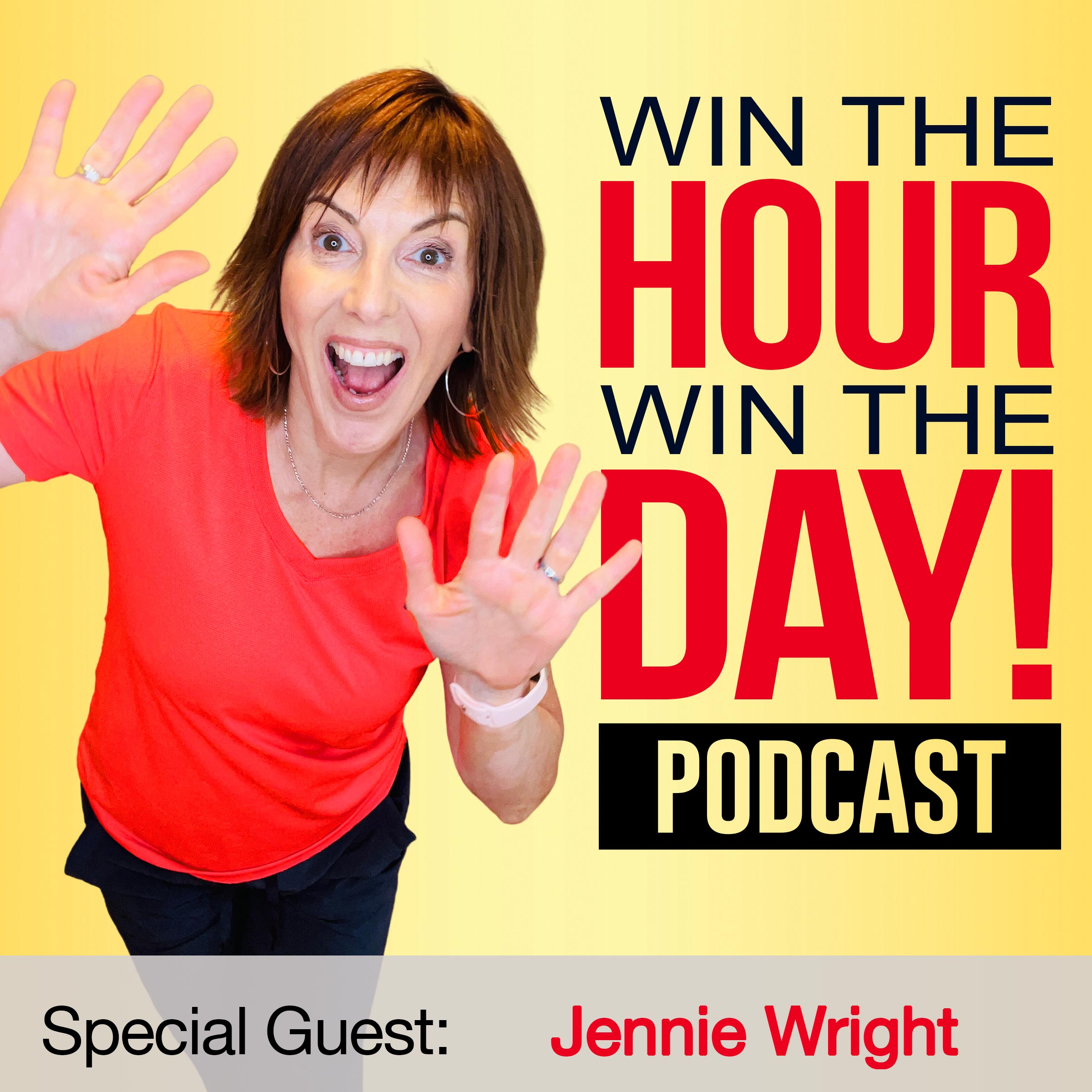
Are You Ready For Your Next Big Win?
Know your entrepreneur personality and I’ll take it from there!
Recent Podcast Episodes
Preventing Burnout with Smart Work Tools! with Kris Ward
Episode Summary This week’s episode of Win The Hour, Win The Day Podcast is...
Master Social Selling: Heidi Medina’s Strategies for Engagement
Episode Summary This week’s episode of Win The Hour, Win The Day Podcast is...
Boost Productivity and Master Storytelling! with AmondaRose Igoe
Episode Summary This week’s episode of Win The Hour, Win The Day Podcast is...
Master Video Marketing: Top Tips for Entrepreneurs with Dan Bennett
Episode Summary This week’s episode of Win The Hour, Win The Day Podcast is...
Boost Your LinkedIn Strategy with AI Tools for Enhanced Productivity! with Joe Apfelbaum
Episode Summary This week’s episode of Win The Hour, Win The Day Podcast is...
Mastering Personal Branding with NLP Techniques! with Olesija Saue
Episode Summary This week’s episode of Win The Hour, Win The Day Podcast is...
PR Strategies for Diverse Entrepreneurial Impact! with Jennifer Singh
Episode Summary This week’s episode of Win The Hour, Win The Day Podcast is...
Convert More Clients on LinkedIn with Richard Moore
Episode Summary This week’s episode of Win The Hour, Win The Day Podcast is...
Master Business Growth on Pinterest with Meagan Williamson
Episode Summary This week’s episode of Win The Hour, Win The Day Podcast is...
24/7 Sales Boost: Video Marketing Secrets with Alex Sheridan
Episode Summary This week’s episode of Win The Hour, Win The Day Podcast is...
Master Public Speaking Tips with Nausheen Chen!
Episode Summary This week’s episode of Win The Hour, Win The Day Podcast is...
Beating The Burnout With Connie Whitman’s Success Story
Episode Summary This week’s episode of Win The Hour, Win The Day Podcast interviews,...
Craft Your Social Media Content Strategy With Shannon McKinstrie
Episode Summary This week’s episode of Win The Hour, Win The Day Podcast is...
Boost Your Productivity with AI Tools: A Deep Dive with Erik Fisher
Episode Summary This week’s episode of Win The Hour, Win The Day Podcast is...
Boost Visibility: Repurpose Content and Leverage Podcasts With Christina Lenkowski
Episode Summary This week’s episode of Win The Hour, Win The Day Podcast is...
Master Personal Branding & Storytelling with Lisa McGuire
Episode Summary This week’s episode of Win The Hour, Win The Day Podcast is...
Boost Business on LinkedIn with Catherine B. Roy’s Strategies
Episode Summary This week’s episode of Win The Hour, Win The Day Podcast is...
Scale Your Business: Optimizing Virtual Assistant Services with Kris Ward & Rachel Eubanks
Episode Summary This week’s episode of Win The Hour, Win The Day Podcast is...
Affordable PR Mastery: Crystal Richard Unveils Modern Techniques
Episode Summary This week’s episode of Win The Hour, Win The Day Podcast is...
Mastering Business Storytelling with JJ Peterson’s Guide
Episode Summary This week’s episode of Win The Hour, Win The Day Podcast is...
Revamp Your About Page: Guide to Personal Branding
Episode Summary This week’s episode of Win The Hour, Win The Day Podcast is...
LinkedIn Mastery and Video Marketing Secrets with Alex Sheridan
Episode Summary This week’s episode of Win The Hour, Win The Day Podcast interviews,...
The Systems and Processes Playbook: Insider Secrets to Streamlining Your Small Business with Leah Abunales
Episode Summary This week’s episode of Win The Hour, Win The Day Podcast interviews,...
Getting Noticed: PR Strategies with Dina Behrman
Episode Summary This week’s episode of Win The Hour, Win The Day Podcast interviews,...
Innovative Lead Generation and Email Automation Secrets with Jennie Wright
Episode Summary
This week’s episode of Win The Hour, Win The Day Podcast is sponsored by Win The Hour, Win The Day’s Signature Coaching Program the Winners Circle. Kris Ward who helps entrepreneurs to stop working so hard interviews, Jennie Wright.
Are you ready to revamp your lead generation? Join Jennie Wright as she simplifies the art of capturing leads.
In this informative episode, you’ll discover:
-How to create lead magnets that actually get used.
-The best strategies for follow-up that increase engagement.
-Tips for setting up email sequences that resonate with your audience.
Dive into these strategies and more! Don’t miss out on this chance to boost your marketing effectiveness.
Power Personality Quiz! http://winbacktimequiz.com/
Win The Hour, Win The Day! www.winthehourwintheday.com
Podcast: Win The Hour, Win The Day Podcast
Facebook: https://www.facebook.com/winthehourwintheday/
LinkedIn: https://www.linkedin.com/company/win-the-hour-win-the-day-podcast
You can Jennie Wright at
Website: https://jenniewright.com/
LinkedIn: https://www.linkedin.com/in/jenniewrightjlw/
#krisward
#LeadGenerationTips
#EmailMarketingStrategies
Win The Hour Win The Day
https://winthehourwintheday.com
Jennie Wright Podcast Transcription
[00:00:00] Kris Ward: Hey everyone. Welcome to another episode of Win The Hour, Win The Day, and I am your host, Kris Ward. And today we have Jenny Wright in the house. Jenny is a list building and lead generation expert. Now that sounds like a mouthful, but Jenny’s going to break it down for us and we’re going to have fun and we’re going to make this easy. Welcome to the show. Jenny.
[00:00:18] Jennie Wright: Thank you so much. I’m excited. And yeah, we’re going to
[00:00:20] make it super easy.
[00:00:22] Kris Ward: Okay. So lead generation, that sounds heavy and sounds complicated and like a whole bunch of funnels. What are we talking about? And everybody loves our tangible takeaways here. So how do we get started and how do we get started quickly?
[00:00:36] Jennie Wright: Easiest thing is looking at a lead magnet that’s going to convert for your audience and also not doing what everybody else is doing, which is a checklist or a quick download. Make sure that you’re doing something that I think as a quick takeaway has two different ways of people to digest that information.
[00:00:52] Some people read, some people listen, some people watch. So it would be just as easy to create a lead magnet with a video component with it and the transcript. So that people could read that as well. It’s just making it a little bit more digestible to the different ways that people learn. So it doesn’t end up sitting on their desktop and never gets opened.
[00:01:11] Kris Ward: That is a really good point. We could end that here because you know what? Also it gives it a much higher perceived value or you may be somebody, I know for my clients we have this thing at the academy full of resources and stuff like that. And I always, my thing is when I spend a lot of money on a course and I don’t want to take them all the time.
[00:01:30] I often have to reorganize and repurpose their material. So I do everything I can for my clients, my one on one clients, because I may say something in a video and then you don’t want to be scrolling back and forth and trying to find that one thing. So the transcription. It doesn’t take no time to do that, then you just grab it, copy and paste it.
[00:01:48] But I think with a PDF or a download, I shouldn’t call it a PDF download, it just also gives it a higher perceived value that you have these options that, yeah, I could listen to sometimes I might wanna watch a video and then re-listen to if it’s really good while I’m driving. Okay.
[00:02:03] Jennie Wright: I actually have a secret, I have a secret that goes along with this and it’s Okay.
[00:02:06] It’s using a piece of AI that is out there right now, so you can obviously use ChatGPT and whatnot. I actually use a product called CapShow and I load up my video or whatever it is, the content that I want to use. And I have CapShow actually pop out useful, almost like show notes. Cause normally it’s used for podcasting and it will pop out like the top three things that you should be looking at when you do X, Y, Z.
[00:02:34] And so it makes like a really interesting summary. Okay. Which you can use in your lead magnet. Which I love because then it’s drawing out those really important points, just like you said in that video. So you don’t have to scroll back to try and find that cool point. The AI pulls it out and then you can highlight that in your lead magnet as well as actually use that product that I was just telling you about CapShow to create all the social posts and everything to promote that product. That lead magnet.
[00:03:00] Kris Ward: Okay. So now we’ve got a summary and we’ve got a transcription and we’ve got audio and we’ve got a video. Hello, this is fantastic. All right. So that is something that I don’t think we hear enough about, or I’m out there all day, every day. And I never, and it’s I think the best advice is so simple, but so profound.
[00:03:17] Of course I do this for my clients. Why would I not do this for a lead generation item for sure? Okay. So where do we go from there? What makes it like, what makes your approach to this different than everybody else talking to us about lead generation?
[00:03:34] Mine is always in the follow up. Okay. So a lot of I’ll give you an example.
[00:03:38] I just actually signed up for a, like one of the top five digital marketers, lead magnets. Okay. It was a three page PDF. It looked pretty, but it was a three page PDF. And then I heard nothing from them after I downloaded it for about a week and a half. So what I do a little bit differently is I, like I said before, I include those different things that make it a lot more profound and, easy to do these days, but the followup is the key thing.
[00:04:04] This is where you want to have that quick follow up email, but not just be like, Hey, here’s your, here’s your download. Go have a good, nice day. It’s here’s your download. And by the way, I wanted to make sure you pulled one thing out of this and put it into play today. Here’s one thing you can do, right?
[00:04:20] And I’ll be, and then you tell them what you’re going to do next. I’m going to be in your inbox tomorrow with the next best tip. To help you put into play the thing that you want to fix, right? Whatever it is that you’re trying to help them with. And I’ll see you tomorrow. And then by the way, I am going to have a couple more emails.
[00:04:35] And then I’ve got something really special for you at the end, like a special gift or something. I tease that, but I’m really upfront about saying I will be in your inbox tomorrow. And sometimes I’ll even say, I’ll tell clients to say keep an eye out for the subject line. I’m X, Y, Z, so that they know what to expect in terms of the subject line.
[00:04:53] And it’s it’s just clear, transparent what I’m going to do. And those follow ups land better. There’s a better open rate. There’s more of a click through rate because you’ve set expectations. You’ve been transparent. You’ve told them what’s going to happen and you’re giving them the next thing that they should be doing to fix the problem or issue the lead magnet is supposed to fix.
[00:05:14] Which makes it more permissive because I know all of us in such a rookie state say, Oh my gosh, I don’t want to bother somebody. And we, cause it’s like the age old conversation with LinkedIn, you said, but somebody wants to connect with you say yes. And then you get pitched and yeah. I just let you in the door.
[00:05:31] Now you want to move in. You know what I mean? Yep. So we know when we get a lot of emails in our own boxes, we can just ignore it. Nobody gets violated. Nothing happens. But I think the way you’re walking us through this is it’s more permissive conversational letting me know, Hey, I’m here to help you.
[00:05:49] So I’m going to send you this tomorrow. I’m thinking of you versus the blitz approach. So I think it’s like sometimes the most difficult The most powerful thing, it’s not how you do it, it’s not what you do, but how you do it.
[00:06:01] Jennie Wright: Completely. It’s the approach, it’s the tonality, and it’s the expectation that I’m just coming at this from the point of view of supporting you.
[00:06:11] I’m also going to be transparent that at the end of this, if I can help you, I will. So as an example, I always have a call link in my emails, usually in the footer. And when somebody clicks on it, it will absolutely say I am here to help and support you. If I see something that I think I can help you with, I will let you know if there’s a, a product or a service that I think would be, would match the issue that you’ve have.
[00:06:34] So I’m completely upfront. So people know it’s not a sales call, but if there’s something that I think would work, I will mention it just on the off chance that you need it, want it and so on. And I think that permission based marketing and transparency at all stages in your follow ups and your marketing is a lot better.
[00:06:51] Everybody knows that when you attend a webinar or get a download that there’s going to be some sort of a pitch at some point, but if you’re upfront about it, I think people feel a little bit more relaxed because they’re not waiting for that, that hammer to drop, and they’re not thinking, Oh God, like when, know, when is Kris going to tell me this?
[00:07:07] Or when is Kris going to do that? Like,
[00:07:08] Kris Ward: where’s the hook?
[00:07:10] Jennie Wright: Yeah. And you already know, and it just feels better. Easier, better.
[00:07:14] Kris Ward: I wonder though, you have this soothing way of talking and it just all sounds friendly. So I think that is that to your advantage as well. I guess we can craft that in our messaging.
[00:07:26] Cause I think that’s also a little bit, I guess it’s the tone in which you’re going to write it out. But when you’re standing here saying this, I’m like nodding thinking, yes, I’d agree to anything Jenny told me to do as well. But I, I guess that’s just crafting good copy.
[00:07:39] Jennie Wright: Yes. And I’ve been in sales for over 20 years.
[00:07:43] I used to do door to door cold sales.
[00:07:46] Kris Ward: Oh dear Lord.
[00:07:47] Jennie Wright: And That was house to house and also business to business. Depending on what it was, you get really good at the tonality of being able to just to talk to people. I think it’s really, and, but honestly, it’s about transparency and just being yourself.
[00:07:59] This isn’t an act. This is me every day. If you met me for lunch, this is exactly how I am. And I just, I think that people feel that and appreciate it.
[00:08:08] Kris Ward: Yeah. Yeah. Yeah.
[00:08:09] We know that makes sense. Okay. So we’re now following up with them. We’re telling where they’re following up.
[00:08:13] We’re giving them more resources, even in each document, just so that they can consume it in the way that they best see fit. And how is this still, we’re looking at lead generation in your approach. What are some of the other things that you think are missing?
[00:08:29] Jennie Wright: I think people are creating a vacuum that allows other people to fill it.
[00:08:34] And this has to do with consistency and everything I’m telling, like everything I’m sharing today does not mean that you’re spending 24 seven on your lead gen. This is what a lot of people are doing, and I just went through this, I was working with a company, they’re multi seven figure, they have 30 plus employees. And we’re looking at 30 hot leads trying to come in per day as an example. And what they didn’t have is they didn’t have a systematic follow up system that sounded personal and that sounded GPT as an example.
[00:09:05] So what I find is missing for a lot of people is these second, third, fourth steps of different points or different levels of communication. And that could be a simple followup. If the person gives you their phone number and gives you permission for a text, just saying, Hey, I’m going to drop an email in your inbox and about an hour, it’s got something I think there might help you.
[00:09:29] If there’s anything you need. Hit reply at any point or text me back me or somebody in my team is happy to give you a hand.
[00:09:35] Kris Ward: Okay.
[00:09:36] Jennie Wright: Like that’s not salesy, but it’s just Hey, expectation, this is happening.
[00:09:39] Kris Ward: And for those of us, and there’s many of us dealing with international clients or the fact that I would never give up my cell number. We could be doing that in LinkedIn DM.
[00:09:47] Jennie Wright: Completely.
[00:09:48] Kris Ward: Okay. Completely.
[00:09:49] Jennie Wright: And these can all be automated. So the messages that I’m just sharing with you and whatever way you want to use them, chatbot, DMs, this all can be automated. Yeah. And so it sounds really natural and just creates the conversation with consistency. And I think people miss on the consistency piece because they’re either, I’m in your inbox every day for a week and then you don’t hear from me for a month
[00:10:12] Kris Ward: right?
[00:10:13] Jennie Wright: Or I’m in your inbox once and maybe in three weeks. So we create this, like I said, this vacuum where we’re there for the moment.
[00:10:21] They’re like, Oh my gosh, I love what Kris is doing. And I really wanted the thing. And then if they don’t hear from you for a week, which I know you don’t do, you’re much more consistent. If they don’t hear from you, somebody else is going to fill that void. Okay.
[00:10:33] Kris Ward: I’m not. Listen, I don’t have this all down pat.
[00:10:35] Don’t. But so I think what you’re saying is all of a sudden I have put, a thought, they’ve heard a whisper in their ear, Oh, this isn’t, once I get past this next thing, I am set up all the time, struggling, trying to keep up. Maybe I do need to hear about what a VA could do or super toolkits.
[00:10:51] And then I dropped the ball and then somebody else comes in and is yeah, I’ve been looking for someone to help you with this. Even that one. So then when, what is your formula for when do, like the pacing, when does it wean off? Okay, we sent them a follow up of five emails and do we wait a week?
[00:11:07] Like what does the almost the, yeah, the pacing, I almost want to say contractions look like, what are the contractions look like?
[00:11:13] Jennie Wright: The pacing depends on the industry and the person. Okay. It really does depend and there is trial and error. And now I’ve been doing this trial and error for over a decade.
[00:11:22] So I have a little bit of insight into these different niches. But certain niches like to hear from you more and some not so much. It’s going to depend on that niche and we’re going to have to make some AB testing just to see. And the other thing that we can do to help with that testing is what I call self selection.
[00:11:42] Okay. So in your emails and depending on your email marketing provider, you can do this or you can’t. We can do what I call self selection and self selection is, Hey, I I have about five or six more emails that I’d like to send to you that have really good information. If you want those click below, or sorry, if you want those do nothing, but if you don’t want those click below, and then I’ll only send you my weekly newsletter.
[00:12:04] I’m really excited and have them self select.
[00:12:07] Kris Ward: Okay. Okay. But they may not have even read that email to select themselves out of it.
[00:12:14] Jennie Wright: They may not, but if they do, if you have a really, the subject lines and usually what we have with a lead magnet is we have a really good open rate directly after a lead magnet is registered for, so we can create self selection early in that stage versus later in that stage where the open rates and the click through rates drop.
[00:12:34] Kris Ward: Okay. It makes sense.
[00:12:35] Jennie Wright: So then you’re creating these automations that end up having these branches coming out of this person doesn’t want to receive five more emails end automation, send to newsletter list, or this patient, this person wants five more emails. At end of five emails, send a self selection email and then end automation, send them to whatever.
[00:12:58] I also love if they didn’t open something within about 24 to 36 hours, just send it again, but with a different subject line Hey, I thought maybe you’d miss this, like everybody else, this probably ended up in the wrong side of your inbox. Just wanted to make sure you got it. And so on.
[00:13:12] So there’s those kinds of followups. And I think a lot of people don’t go to that level because they’re like, Oh my God, more automation, but this is so simple and it’s just easy to do and it’s set and forget.
[00:13:24] Kris Ward: It seems to me like the way you talk about it, I feel like I’m talking, it’s almost like you’re an email engineer.
[00:13:31] Like I’ve heard other people talk about email, but, and marketing, and I believe in it, but. But this is different. I feel like it’s a tactical maneuver. Okay. That’s where we get the gang together. This is what we’re doing next.
[00:13:41] Jennie Wright: Yeah. Yeah. Yeah, absolutely. Yeah. Like we ride at dawn kind of thing.
[00:13:46] Kris Ward: Yeah. Yes. That’s what I feel like. I’m like, everybody lean in. Cause she’s talking softly, but these are important instructions. In the veil of night, we’re sending out this email. Okay.
[00:13:55] Jennie Wright: Absolutely. Absolutely. We’ll see what happens in the morning.
[00:13:58] Kris Ward: Yes. Okay. So we’re doing that. So it’s a very elaborate process, but simple at the same time.
[00:14:04] Jennie Wright: Completely. And it doesn’t have to be as elaborate as I’m saying from the get go. These are things that you can build so you can add the different tree in your automation of saying, okay, I want to create this self selection piece. Do you want to receive the next five emails? Yay or nay. And then I’ll create that self selection piece or, you can add them as you go.
[00:14:24] One, I didn’t do this all yesterday. This is like stuff I’ve added onto. And it’s become something that when I onboard a client for say, like fractional CMO services and stuff like that, this is one of the first things I look at, like, how deep does your automation go and how are you connecting with people?
[00:14:40] I just. It boggles my mind, actually it doesn’t boggle my mind, and I’m not trying to be mean, but I find that a lot of people, because they just don’t know what they don’t know.
[00:14:47] Kris Ward: Yeah.
[00:14:48] Jennie Wright: Is they’ll create a lead magnet you’ll register for and you know where they put The confirmation page on the blog on their website, which has no call to action to me. And it does nothing.
[00:15:00] Kris Ward: Oh, I see what you’re saying. So you’re going to drive them to the blog on your website.
[00:15:03] Jennie Wright: That’s what the person had.
[00:15:04] Kris Ward: What’s what they’re doing. Okay. I didn’t follow that. Cause it didn’t make sense. So I thought I didn’t understand, but it just doesn’t make sense.
[00:15:09] Jennie Wright: No, it makes no, it made absolutely no sense.
[00:15:12] And what an opportunity, like what a lost opportunity. Revamping all of the confirmation pages or where those confirmed registrants would go was one of the first tactical decisions that I made working with this client. And I think we made, cause they had 15 lead magnets. We made an individual lead magnet confirmation page for each single one that had basically the same information, but was a lot more geared towards whatever that lead magnet was.
[00:15:40] It has secondary information. Like awesome. You got the lead magnet. Great. This might help you. And this might help you. And we’ve got this really cool resource and make sure you follow us on such and such. And we’ve got webinars coming up. Click here to add them to your calendar. So it’s really I know that again, this sounds, it’s not difficult.
[00:15:58] It’s just. Yeah. It’s being like a an email engineer. It’s just like looking at it and where all the cogs and wheels I actually love that you said that it’s
[00:16:05] Kris Ward: thank you. You can use it. Yeah.
[00:16:07] Yeah, I have been more than one person I’ve labeled on this show and said, Oh my gosh, hold on. I gotta write that down. That’s what I am.
[00:16:12] Jennie Wright: I might put that in my footer. I’m an email engineer, but yeah, it’s just adding these different levels. Of almost just like different, yeah, it’s just different levels to your automations or different levels to how you’re doing things that make sense to the consumer.
[00:16:28] Kris Ward: Now, not getting too techie and we deal with people, we’ve got listeners around the world.
[00:16:32] Are we looking at a basic email provider, like Constant contact or whatever survey monkey or whatever pairing with a funnel process or can you divide your emails up on just are we talking CRM?
[00:16:49] Jennie Wright: Yes, and is the answer depending on your tech stack now, I’m a big believer in really good tech stacks.
[00:16:56] Okay. And where you are right now is not necessarily where you’ll be in a year and your tech stack might change. Do you remember when you were a kid and you had to get a pair of new shoes and they like felt where your toe was and they wanted to have a little extra room in case you grew?
[00:17:10] That’s how your tech stack should be. Okay. So your tech stack should fit you right now, but room for the future. And so if you’re on MailChimp, which is where most people start off because it’s free it’s probably not where you’re going to stay. So you’re looking at something to do the kind of automations I’m talking about, you’re looking at convert kit, you’re looking at active campaign.
[00:17:31] You’re looking at, if you’re really big, you might look at HubSpot to do this kind of stuff. I would stay away from keep personally, my own personal opinion, that keep is very convoluted and very difficult to use. Unless you have a, degree of some sort. So I would prefer people to use those types of things.
[00:17:48] And I also recommend staying away from an all in one solution.
[00:17:53] Kris Ward: I’m all against all in one back in the 1800s when we had a photocopier and a fax machine. I’m like, you can’t know when you have a machine that does three things in one, you’re not getting three things. No, you’re never,
[00:18:06] Jennie Wright: They’re never the expert in one thing.
[00:18:09] Kris Ward: No.
[00:18:09] Jennie Wright: So although I love Kajabi for courses, I hate Kajabi for landing pages.
[00:18:15] Kris Ward: Yeah.
[00:18:16] Jennie Wright: Or, and I don’t like it for email marketing. So I always look at creating a tech stack. The only all in one that comes close to being a lover in my heart is go high level.
[00:18:26] Kris Ward: Okay.
[00:18:26] Jennie Wright: And that is only because the people who are engineering that particular piece of software are putting a lot of effort into each particular portion.
[00:18:34] Kris Ward: Okay.
[00:18:35] Jennie Wright: And I can see that, but it’s still, I’m still not a lover of all in one solutions, but if I had to, it would probably be go high level, but my own personal tech stack that does this as active campaign. And then a lot of my clients, because they’re in the, multi six or seven figure, they’re using something like HubSpot.
[00:18:52] Kris Ward: Okay. Okay. All right. So now. We’re using that we’re building on a funnel. We’re not going to do it all in 1 day, but we can be mindful and purposeful about the fact that we do have a follow up and then we have different touch points in that and make being clear on where the landing page is going to directing them there.
[00:19:10] And I know you said. It it depends, but let’s say, your service based business, you’ve got clients, your coaches, consultants, whatever. So I go through that onboarding process, send you a bunch of emails and you can opt out. Then do I communicate with them once a week or do I dump them eventually into my main email list instead of just the entry point they came in, like we’ve got this quiz, it tells you which biz personality that you have.
[00:19:36] Do we keep them in there for 12 weeks? And then we put them in our regular. Email list. You know what I’m saying?
[00:19:42] Jennie Wright: I do. And the answer again is yes. And right. So it’s not going to be an all in one answer for this. Of course depending on the level that you’re at and how complex your automations are or how many lead magnets, if you have 15 lead magnets, it’s going to be a little bit more complex than if you have to.
[00:19:59] But the, but the true answer at any level will most likely be yes, you will end up putting them into your regular email sequence at some point. When your your Seinfeld sequence, your onboard sequence, your, connection sequence, whatever you want to call it is complete or they self select out.
[00:20:18] Okay. Okay. And self select into your newsletter, into your weekly email. I’m a believer in emailing at least once a week. Okay. I will say that when I’m in a launch that does go to two. Okay. I always warn my audience ahead of time, by the way. And I give them a self selection. I’m like, Hey, for the next four weeks, I’m actually going to be promoting my summit’s made simple XYZ.
[00:20:41] And so if you don’t want to get the promotional emails, those are going out on Thursday, click the button below. You won’t get them. Okay. You’ll still stay in my newsletter, but you won’t get bombarded by, the Summits Made Simple launch emails. And some people will click on it and they get a little success page with me with a thumbs up going, great, awesome.
[00:20:59] You’re not going to get these emails, but I’m glad you’re staying on the list and I’ll talk to you soon.
[00:21:03] Kris Ward: I think what I’m hearing from you first off is that you can’t do it wrong. You can just do it better and better.
[00:21:10] Jennie Wright: Perfect. Yes. Perfectly said. I didn’t even think of it that way, but that is a perfect summation.
[00:21:14] Kris Ward: Well flattery will get you everywhere here. Okay. So now I’m giving perfect answers. This is awesome. We shouldn’t end the interview while we’re at it. And then the other thing is what I notice is it’s you’re talking to them and not at them. And we just all don’t think any of us mean to do this, but you get so excited about what you have to offer.
[00:21:33] Like my case, I have people that very emotionally say, Kris, you saved my life. You changed my life. I almost was getting a divorce. I was working on these crazy hours. My health was deteriorating. And so I do passionately believe in having a business that supports your life instead of consuming it. And then it’s very easy for your passion.
[00:21:53] to, if you don’t have this soothing Jenny way of talking to come off as aggressive because you’re, my husband, you say it’s only helping when you’re helpful. So you think you’re helping, you’re not helping because it’s not helpful. So I think. Where is really just slow down. I always say slow down to speed up, but slow down.
[00:22:13] And if the language is of that of, and this is overused not being of service because everyone says that, but what does that mean? It’s like a parent being of service to their child. No, I’m stopping you from eating candy, putting you to bed because I know what’s best for you, but you don’t care to hear that.
[00:22:29] When you’re a child. So I think just the gentle way of, Hey, this is what’s happening. Like talking to them like they’re a friend, Hey, the next few weeks, I’m going to be busy with this launch. If you don’t want to hear about it, don’t answer your phone because here’s what I’m about. So I see, I really feel that is the big takeaway for me here.
[00:22:46] Jennie Wright: Yes. And that’s the whole vibe that I like to create. And that’s also the vibe that gets me like an email. Cause I sent an email yesterday for my podcast. Cause it comes out on Tuesdays at the time we’re recording this. And I actually got an email back from person, this morning. And she’s I read your email yesterday.
[00:23:02] I meant to connect with, I meant to say something back, my life got in the way and stuff. Thanks for what you said, but my business seems to be really slowing down while I feel like yours is speeding up and I don’t know if I’m in the same space as you anymore. And so I just emailed them back and I’m like.
[00:23:17] Just because mine seems to be picking up pace and yours seems to be slowing doesn’t mean I can’t help. Why don’t we just have a conversation and talk about where you are, even through email, like I don’t care. Yeah. And just talk to them and find out what it is. Cause usually what I find Is that the small tweak, and this is universal to what we’re talking about, the small tweak has long term effect.
[00:23:39] It’s like that butterfly effect that people talk about these small little notions that we can change in our email marketing or our tone have these massive effects because then people feel like you’re a real human being, that you’re personable and that you care.
[00:23:54] Kris Ward: Yeah.
[00:23:55] Jennie Wright: If you feel seen and heard and cared for.
[00:23:57] In any way, shape, or form. That’s going to feel great. Please do that. And I think your marketing has a more subtle yet.
[00:24:08] Kris Ward: Yeah, it’s this is a bad example because we can’t do this anymore, but it might be like watching an actor, you like all their movies, you see them in interview and you feel and trust them.
[00:24:17] So when they say the next movie’s coming out, you go, although I think that’s a horrible example now because I find that I, when I do trainings, often they start with a quote and now I find Oh, can’t use that quote cause he did this. Oh, can’t use that quote cause we found out about this quote. Oh, we can’t do that quote.
[00:24:31] Cause he’s in person. It’s it’s Oh my God, all history other than five minutes ago, can’t do that quote. Cause he slapped somebody at the Oscars. You’re like, Oh my gosh. So then
[00:24:41] Jennie Wright: make your own quote. There you go.
[00:24:42] Kris Ward: Yes. I do my own now. Cause I’m like, I know where I’m at.
[00:24:45] We’re good. I would love to know.
[00:24:46] Jennie Wright: There’s no like history there. That’s going to cause a problem. Yeah.
[00:24:49] Kris Ward: Oh my gosh. Okay. This has been fantastic. Jenny, where can we find more of your brilliance?
[00:24:55] Jennie Wright: Thanks. When I don’t sound like a frog because I have bronchitis and I’m trying to get through and chat everybody can find me on LinkedIn mostly as well on my website.
[00:25:03] My website is jenniewright.Com and I’m either Jennie L. Wright or Jennie Wright everywhere. And I’m W R I G H T.
[00:25:12] Kris Ward: And I will also jump in and say, if this is how you sound with bronchitis, dear Lord, the rest of us, it’s you sound great. I don’t want to hear about your complaints.
[00:25:21] Jennie Wright: I had a cup of warm tea before this, just to try and sound good.
[00:25:25] Kris Ward: Okay. Everyone shared this with the business, buddy. They need to hear this. So many of us are doing this wrong, so pass it along. And we love getting your reviews. I read each and every one of them. Thank you so much. We will see you in the next episode. Thank you again, Jennie.
[00:25:38] Jennie Wright: Thanks so much.
